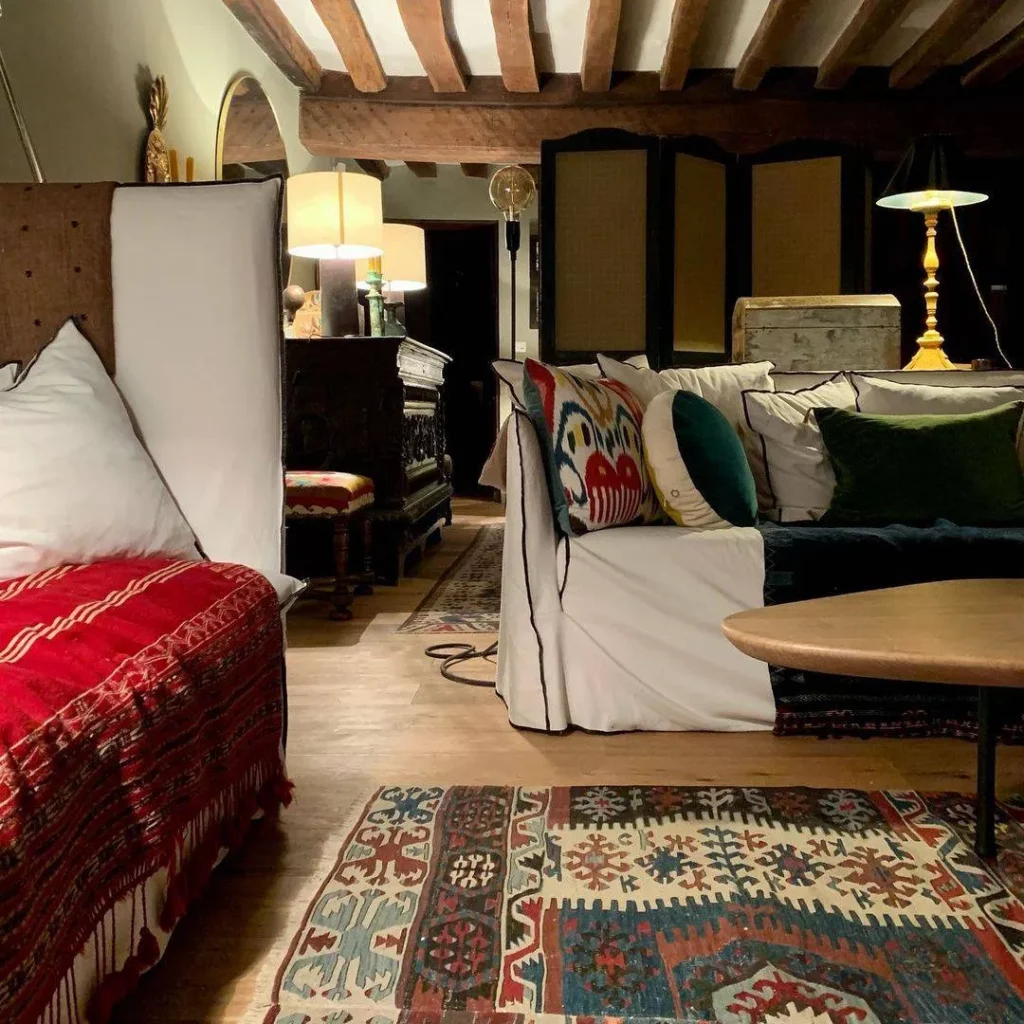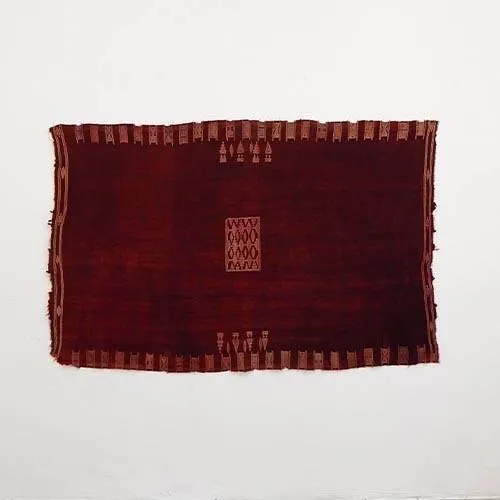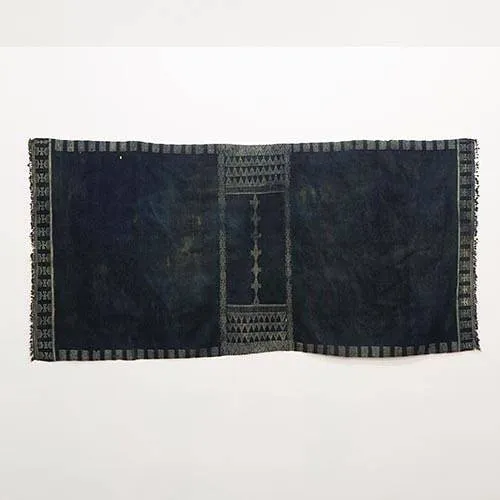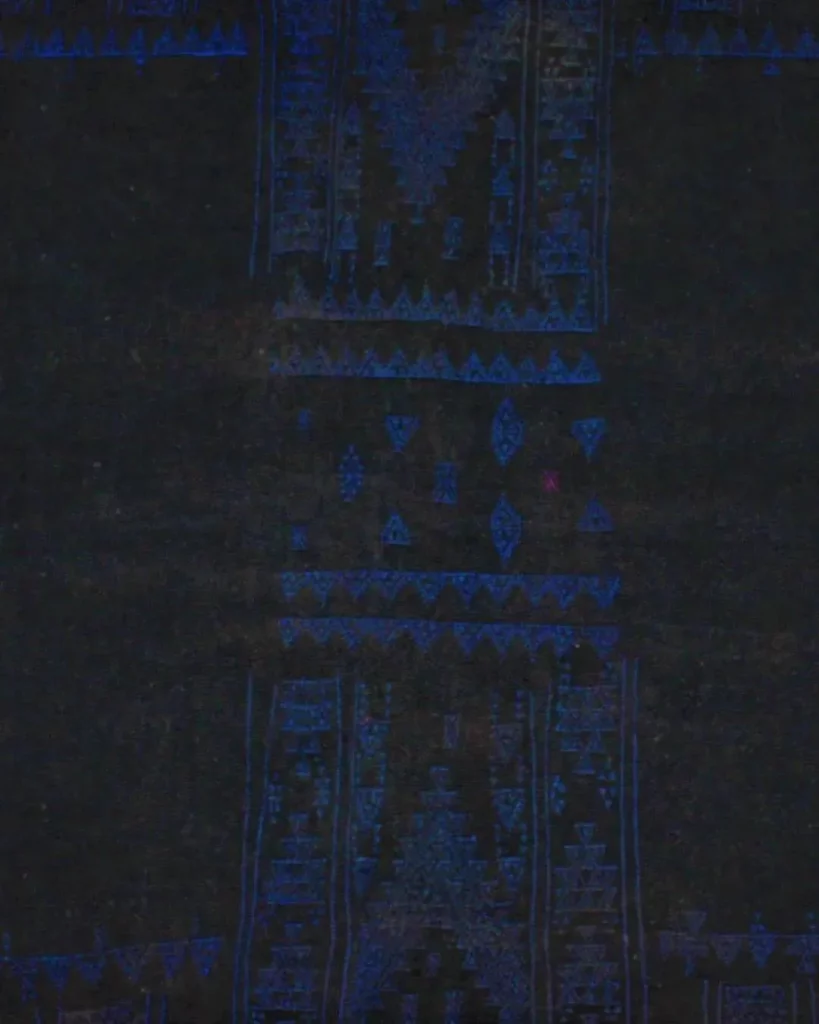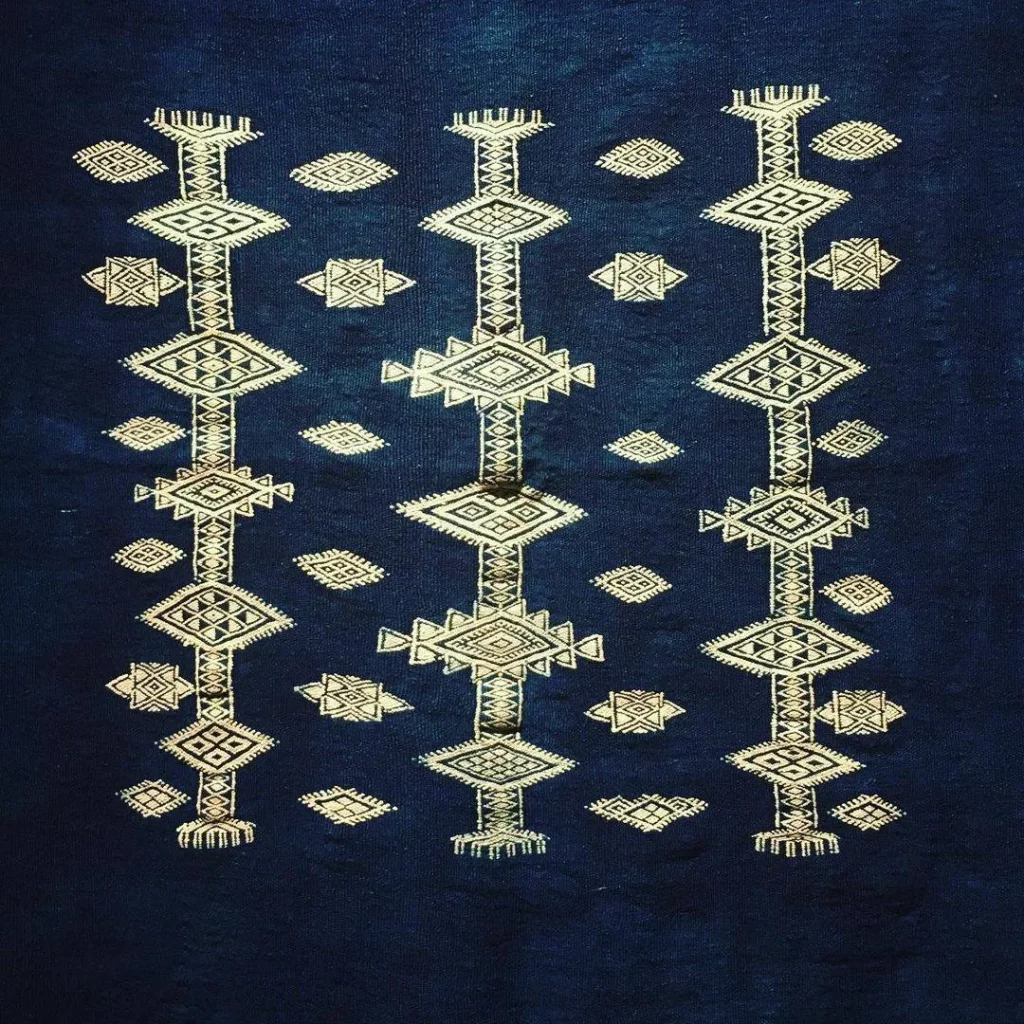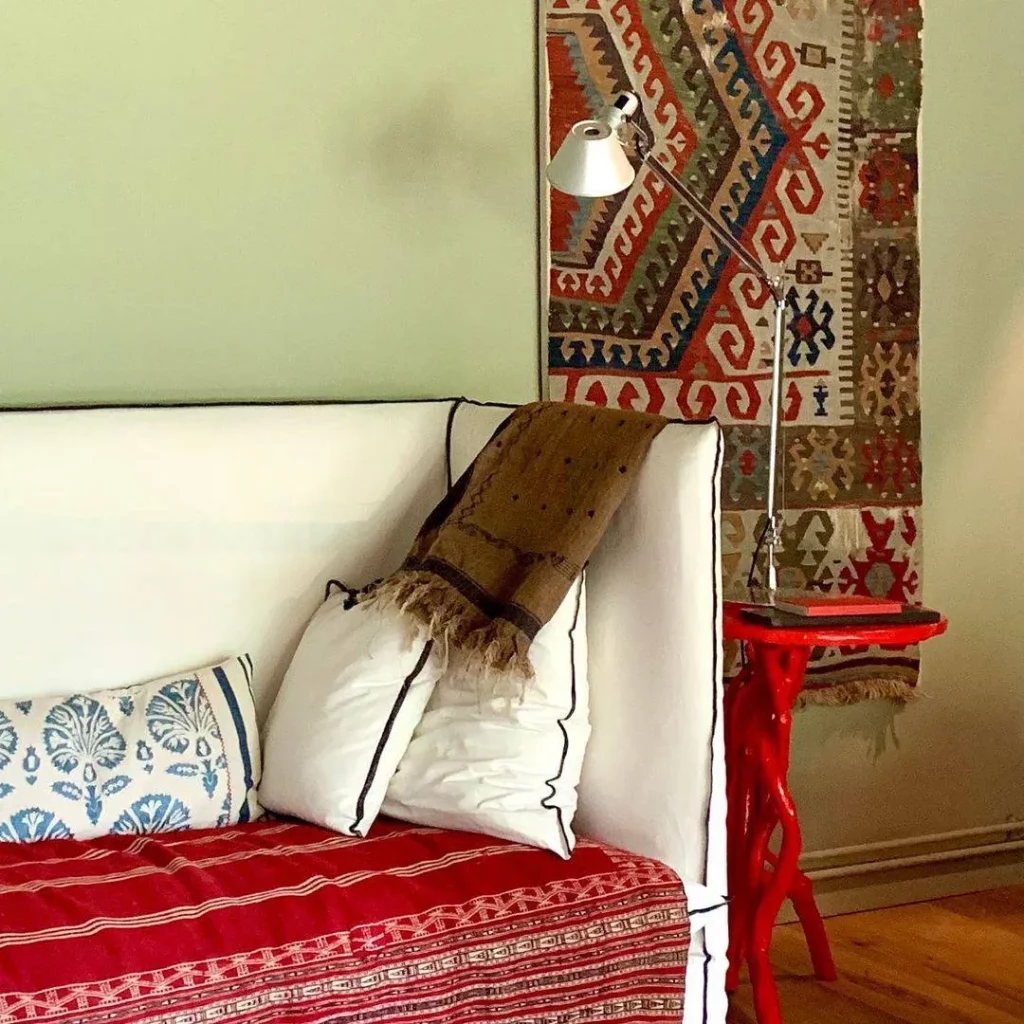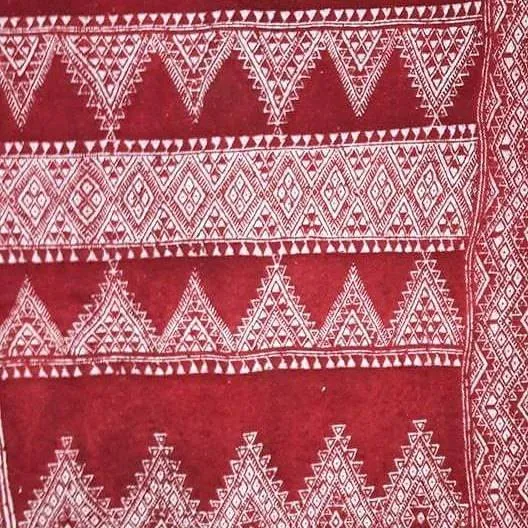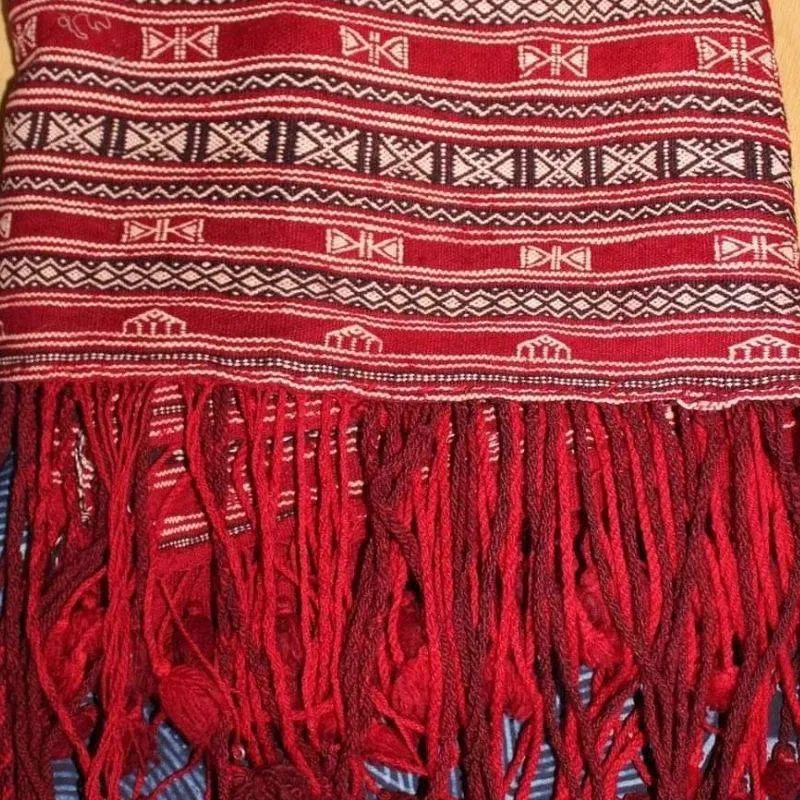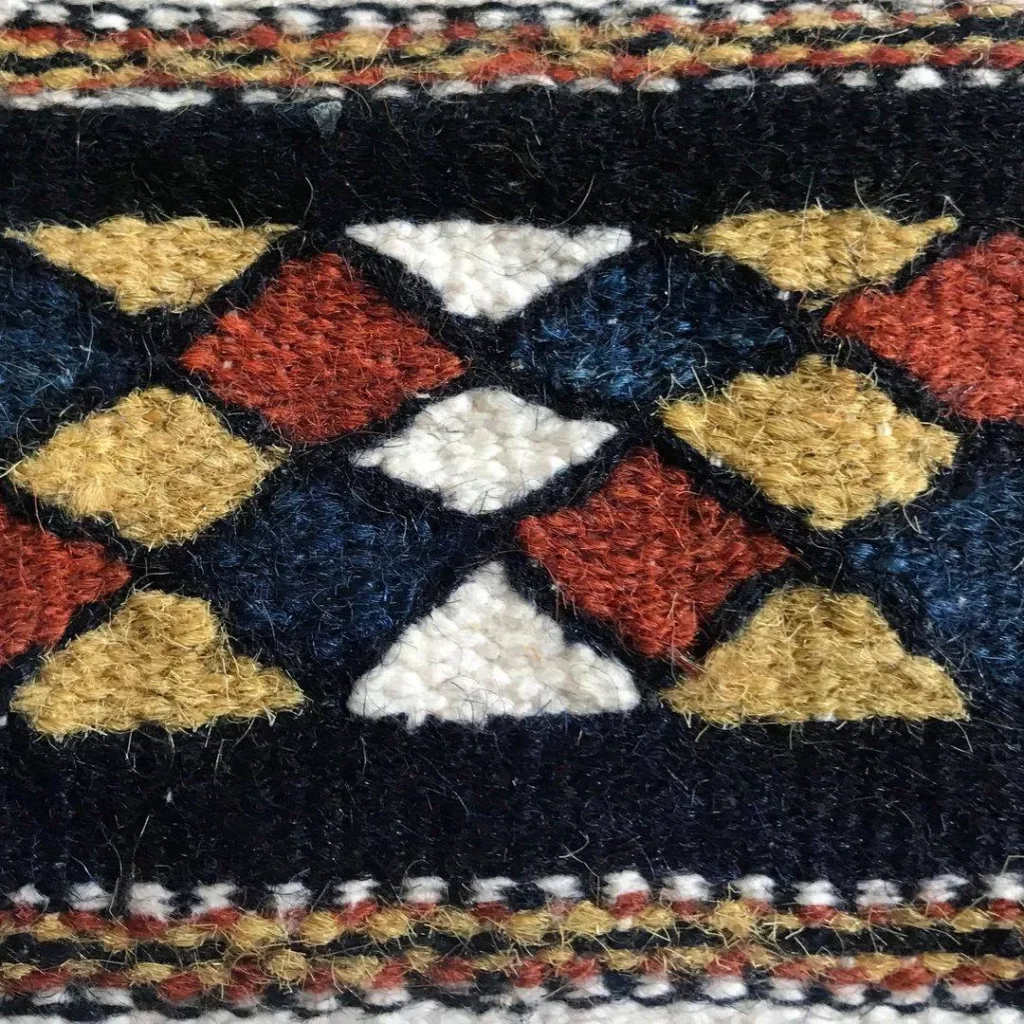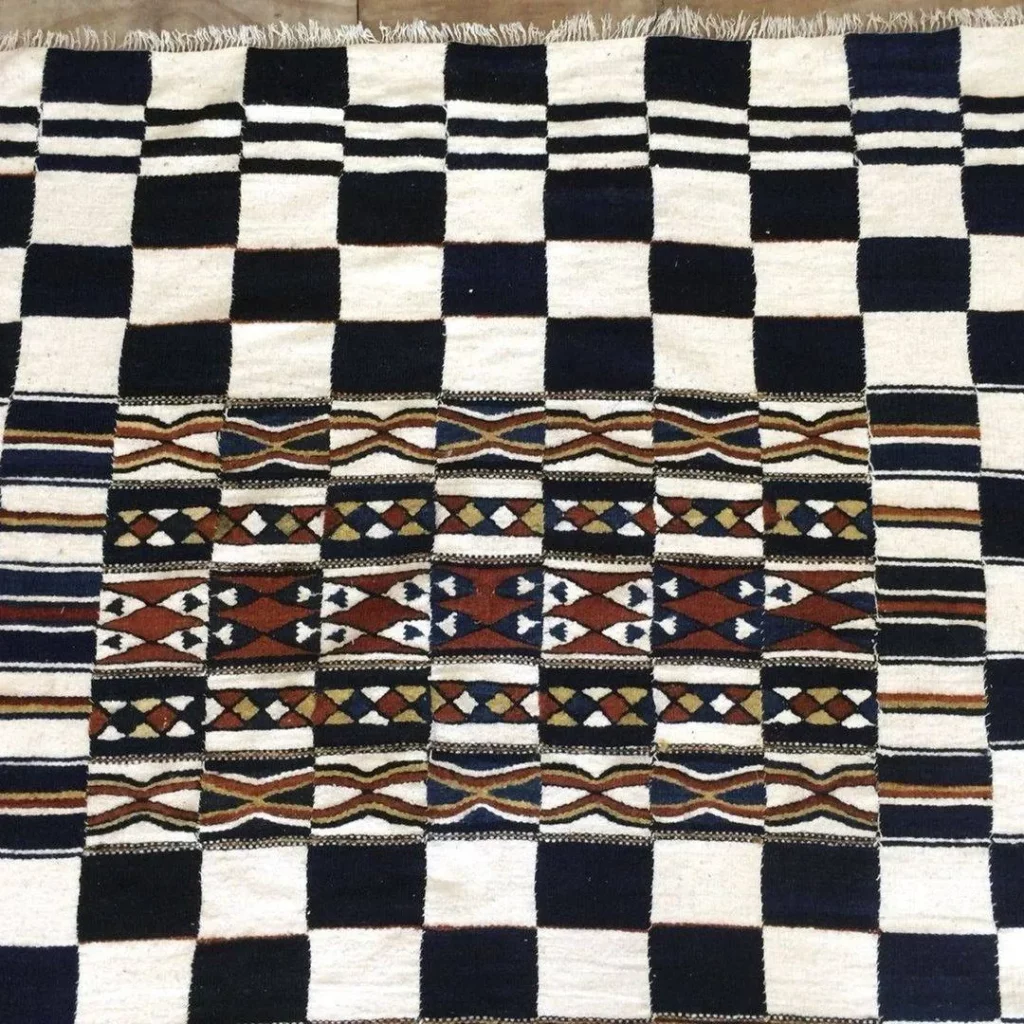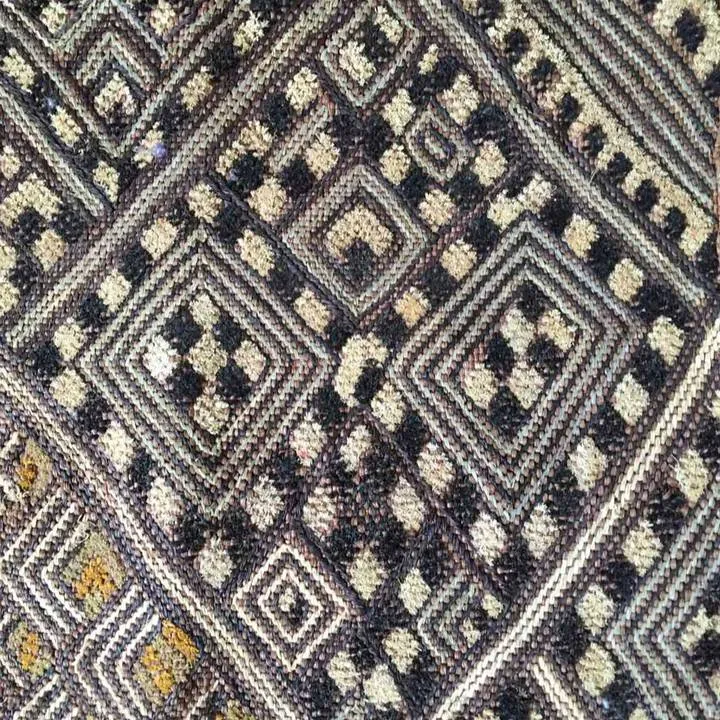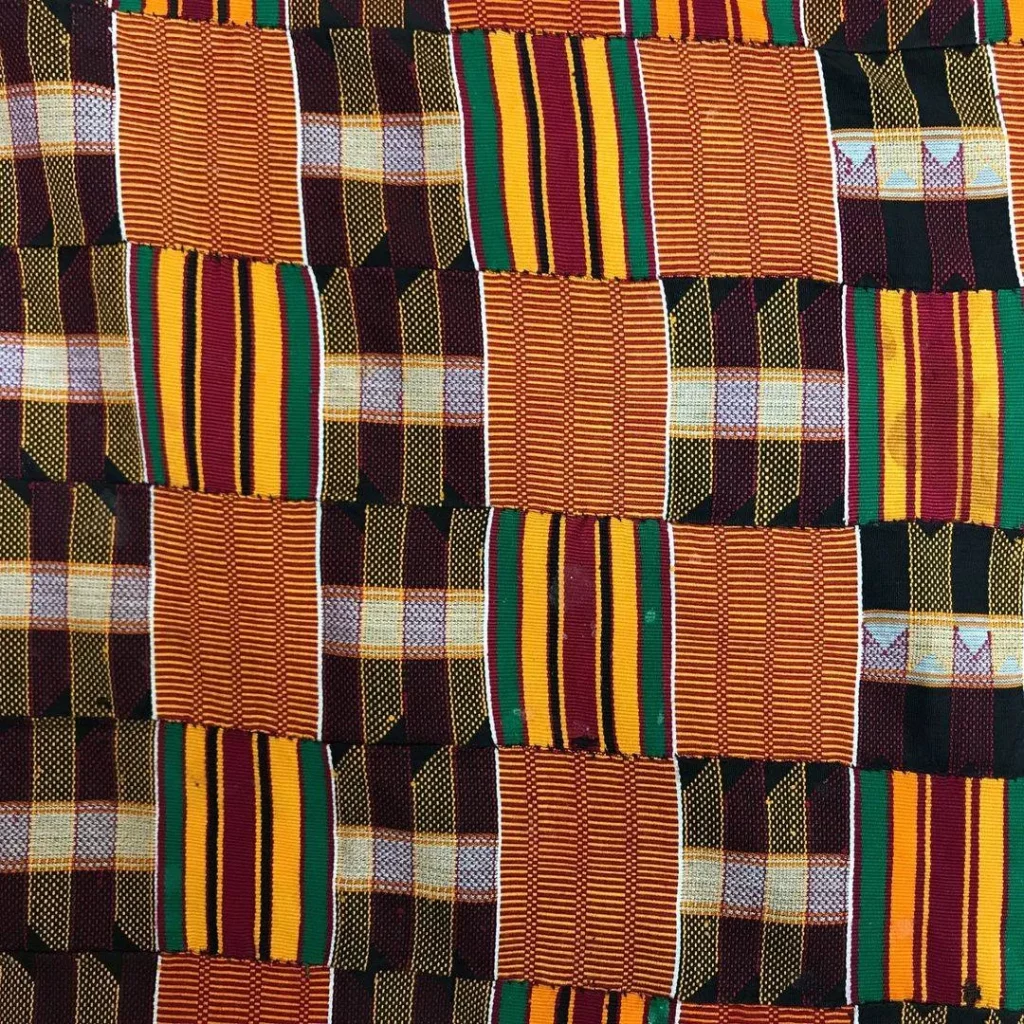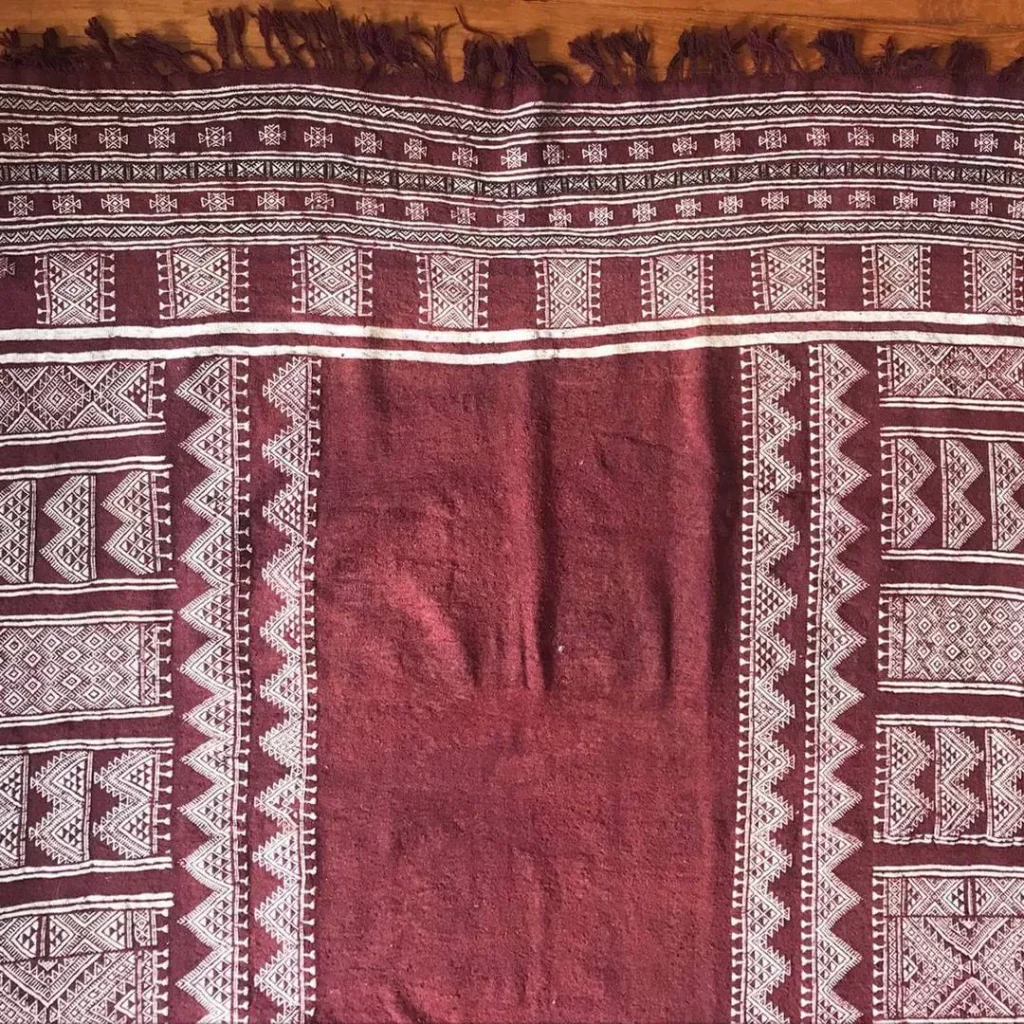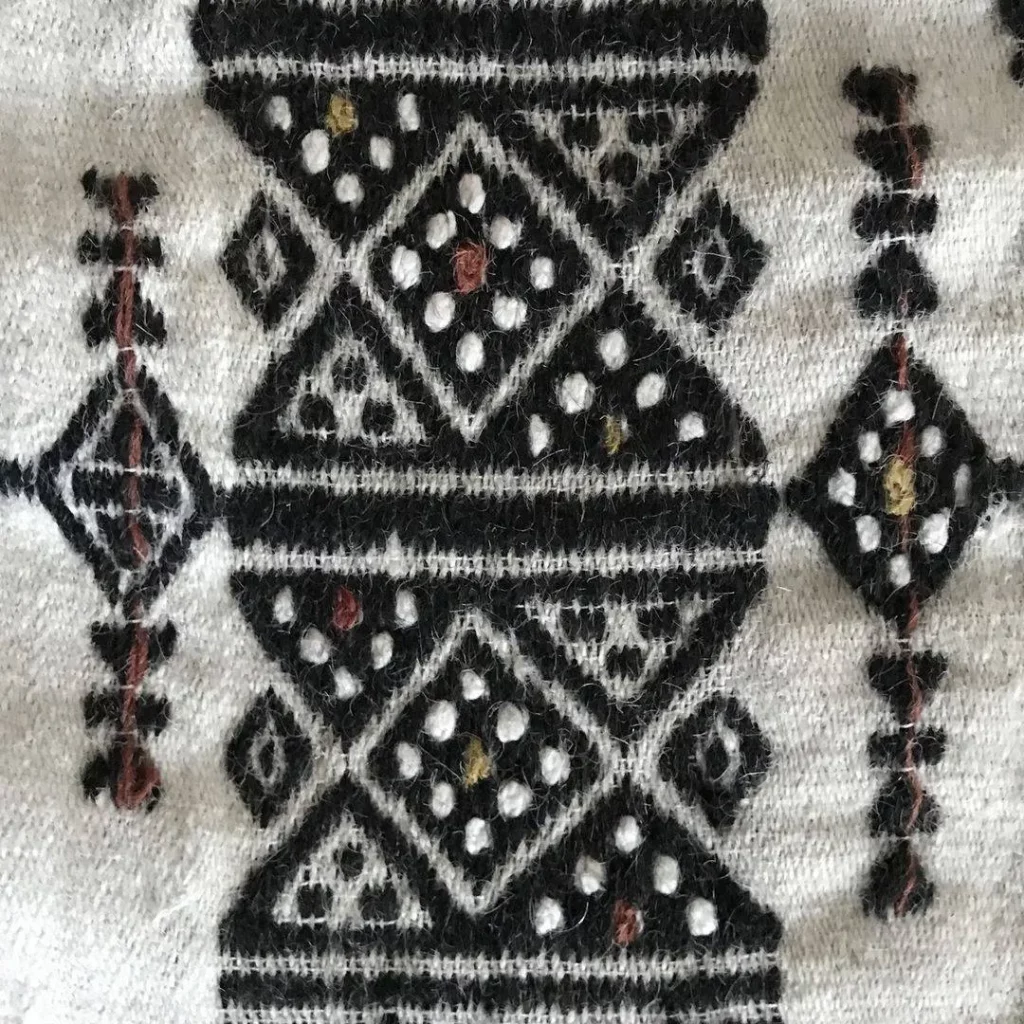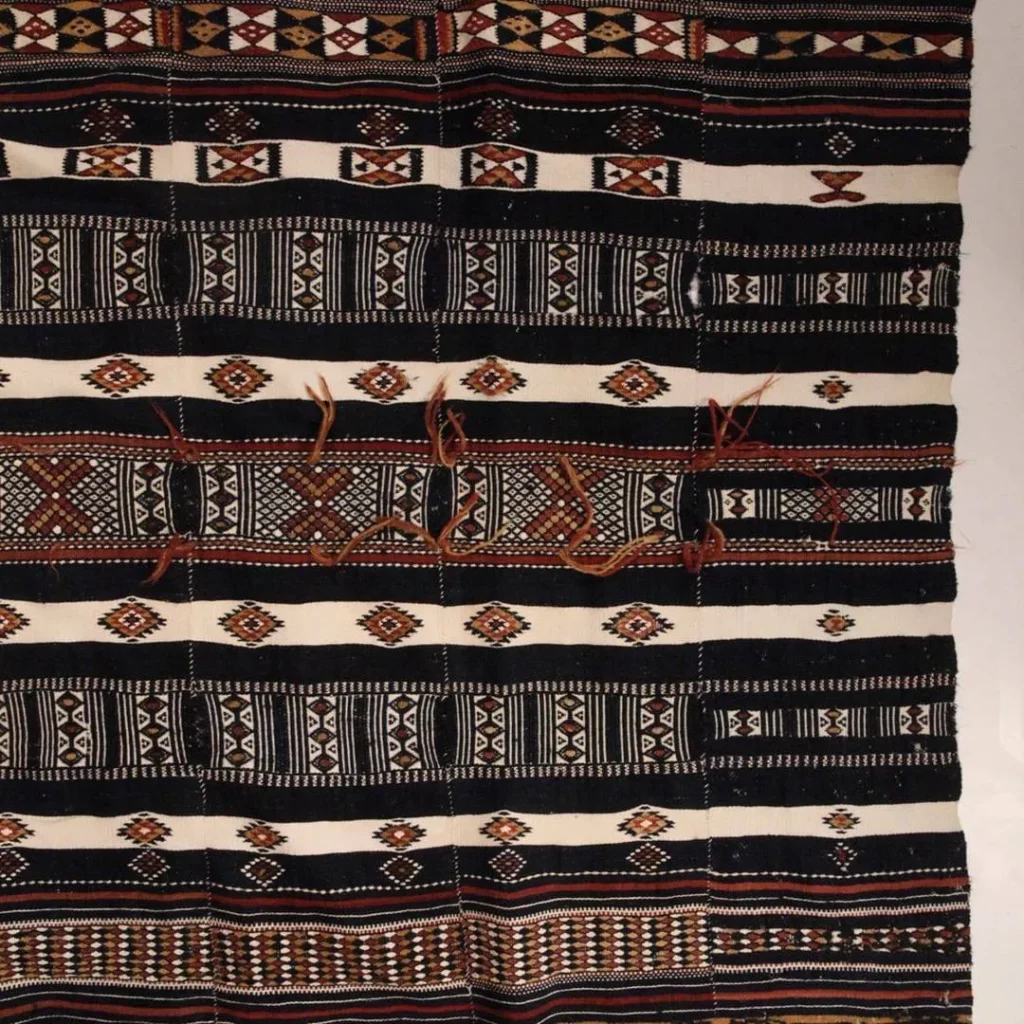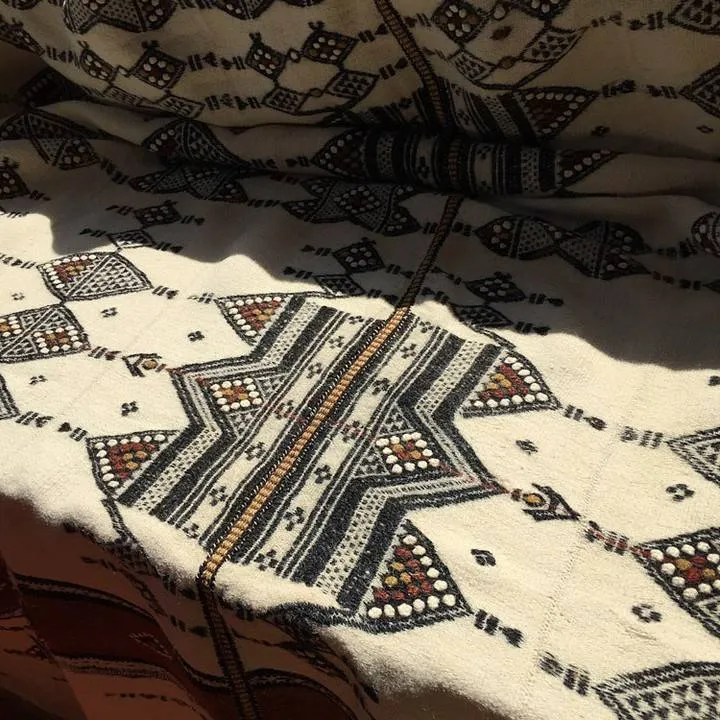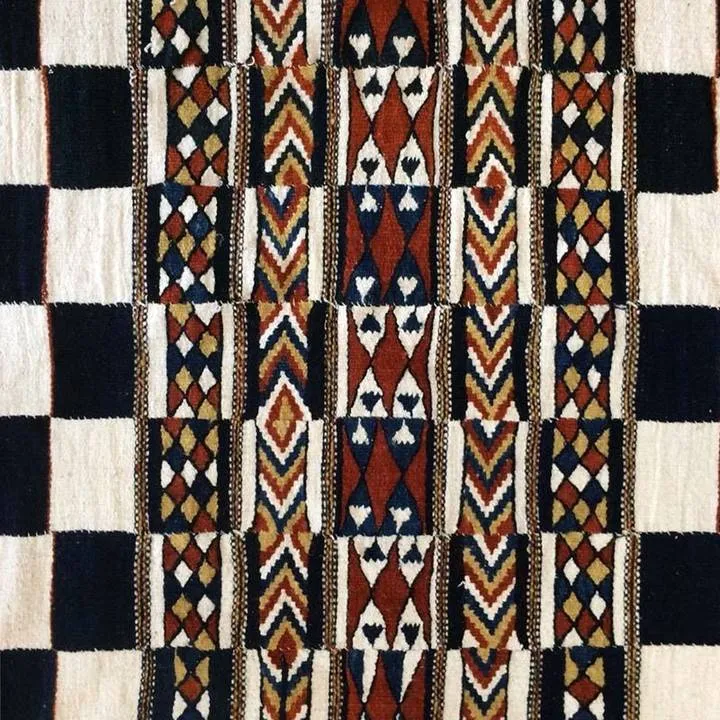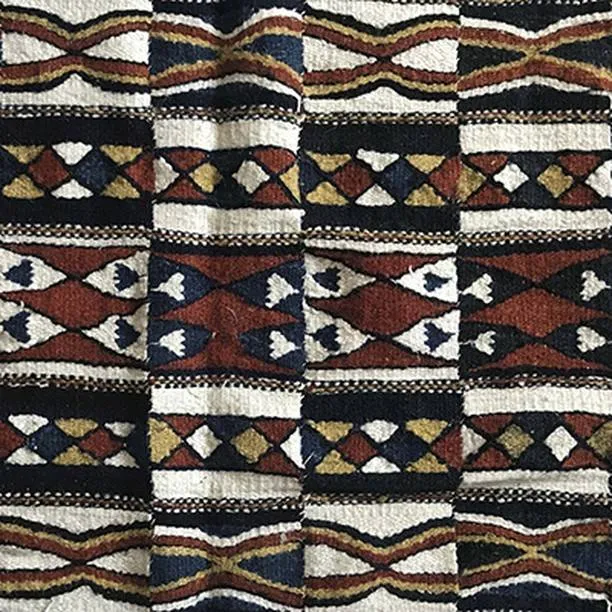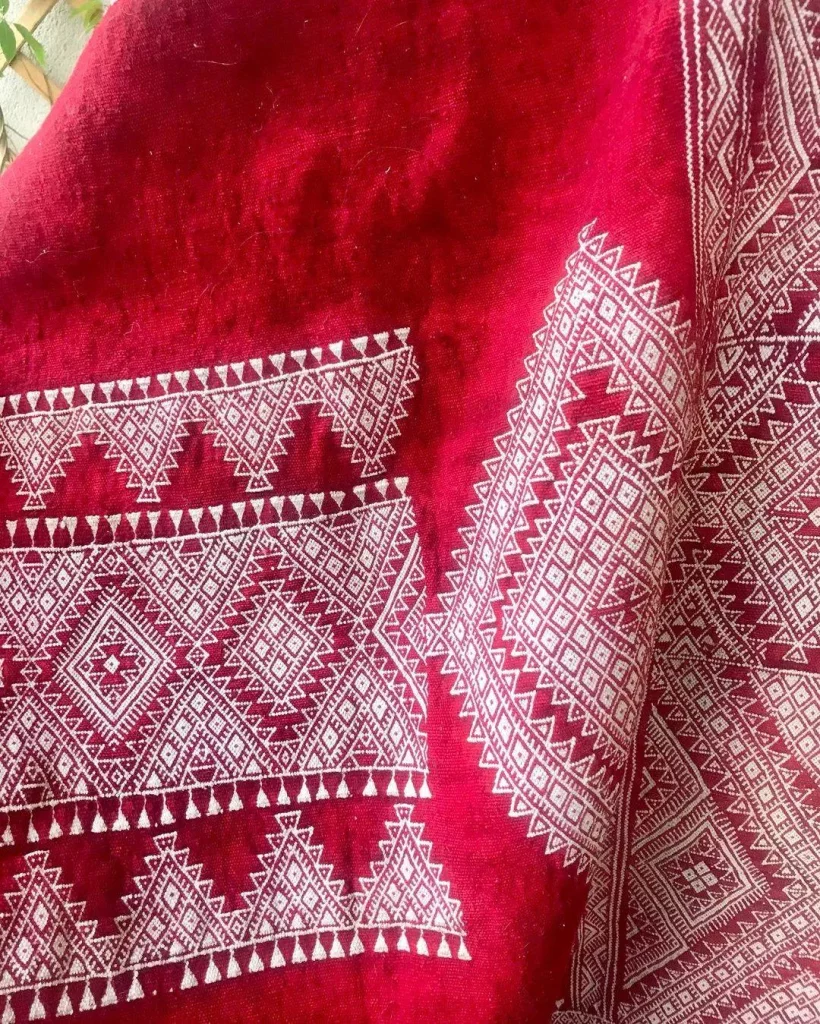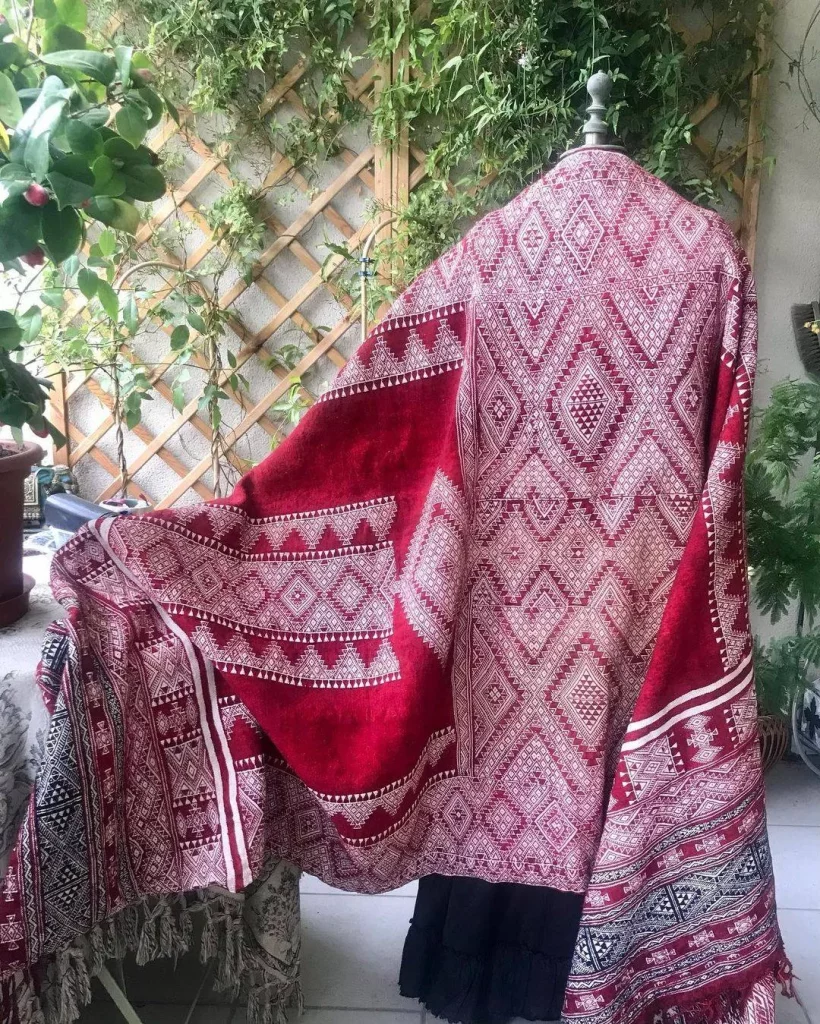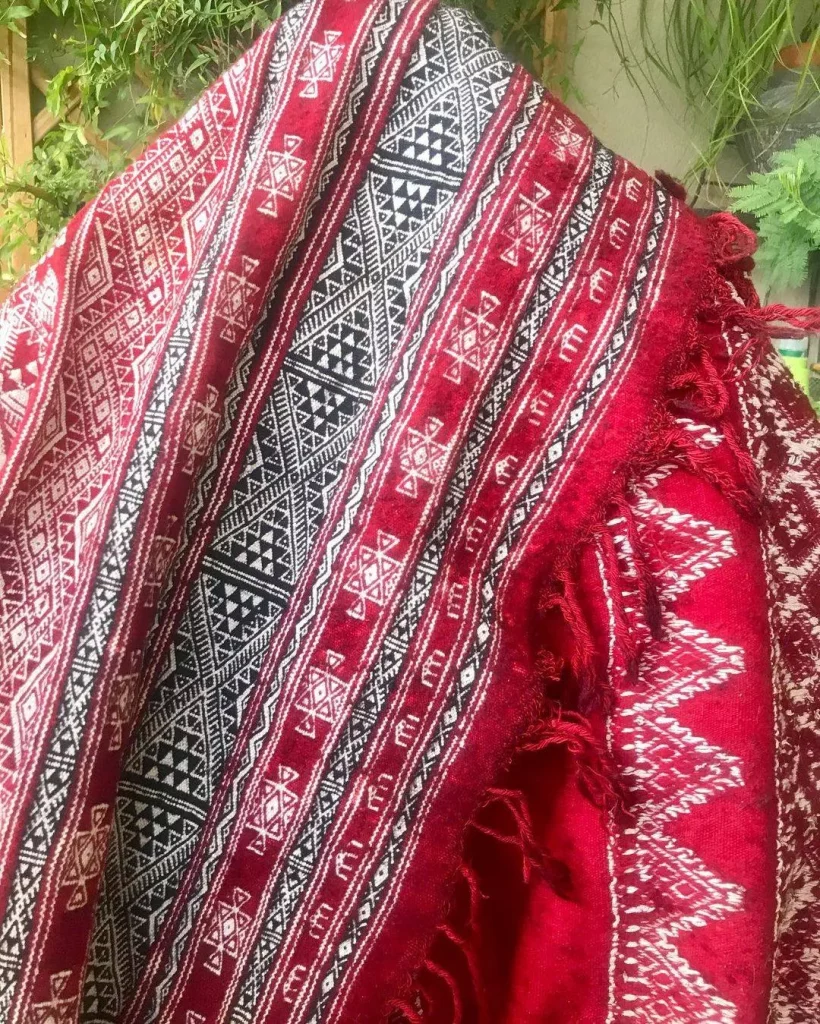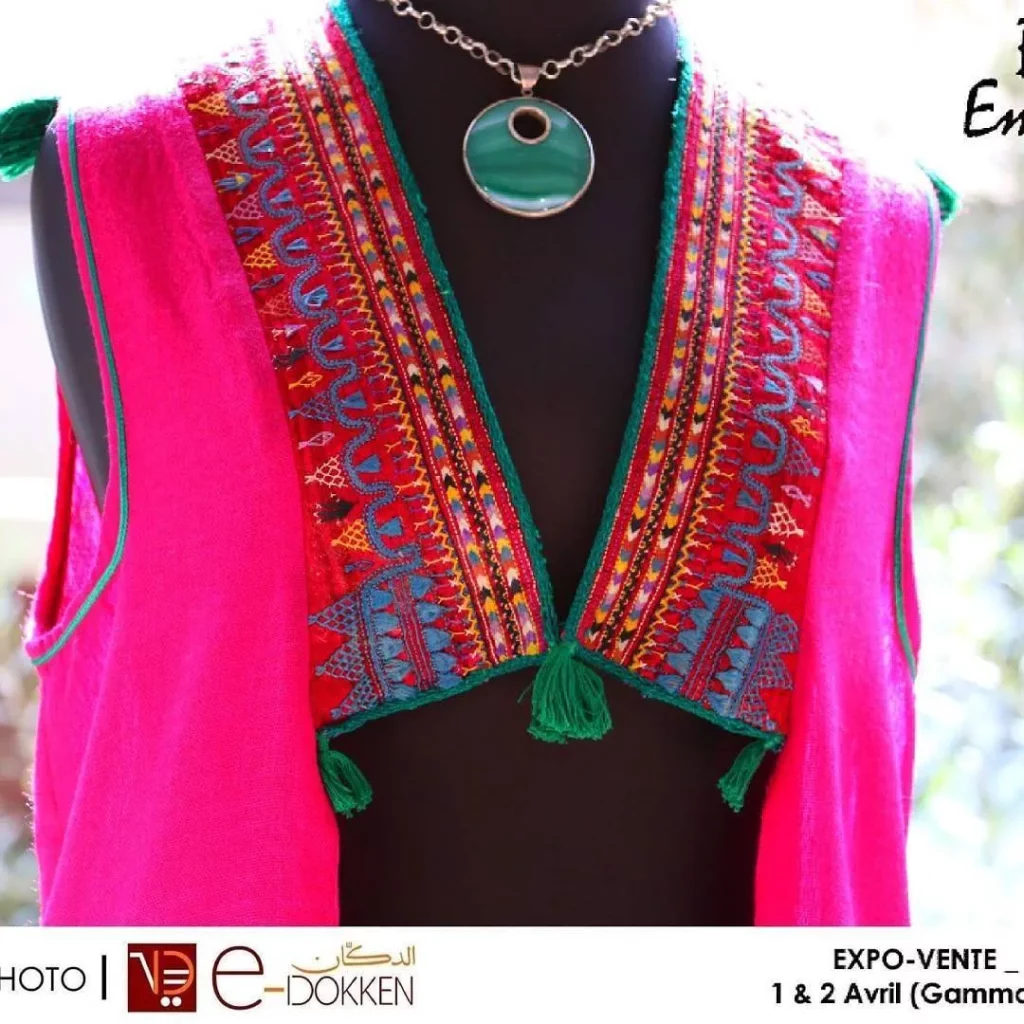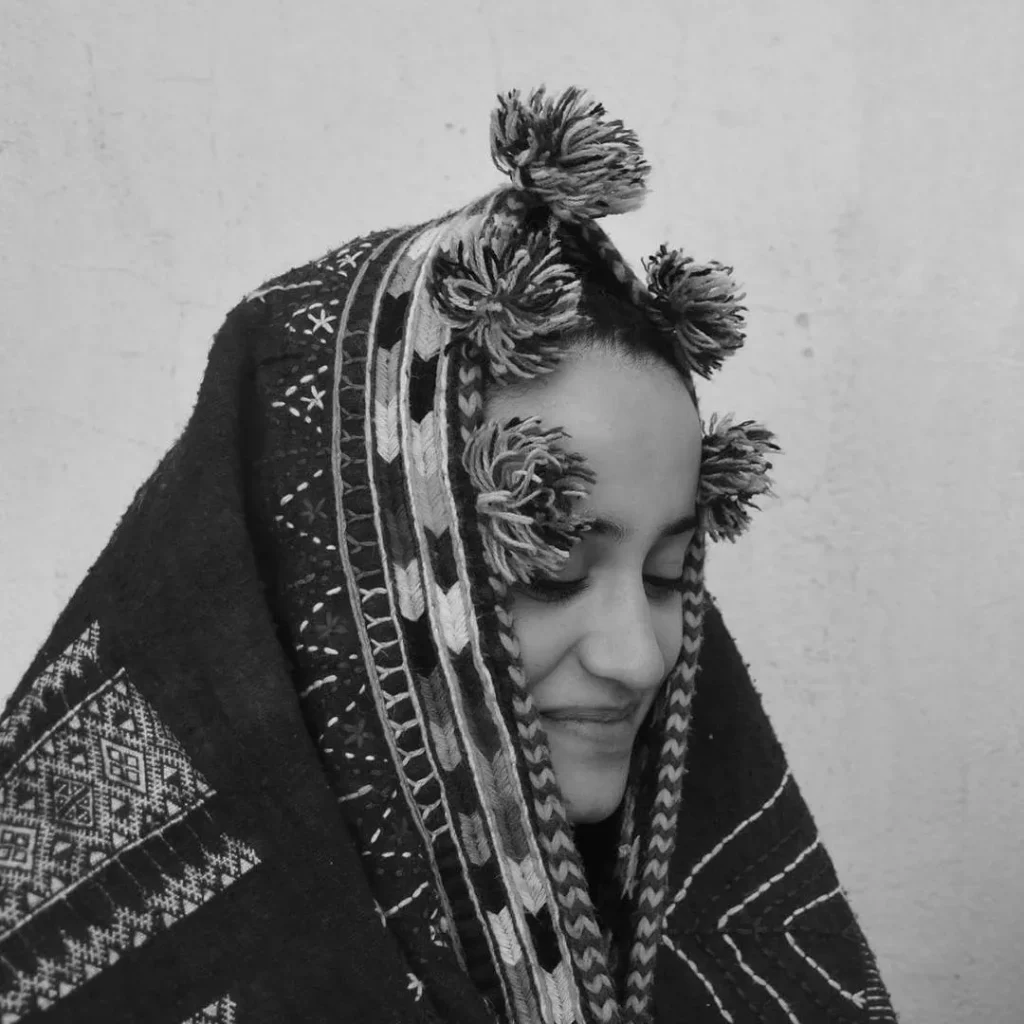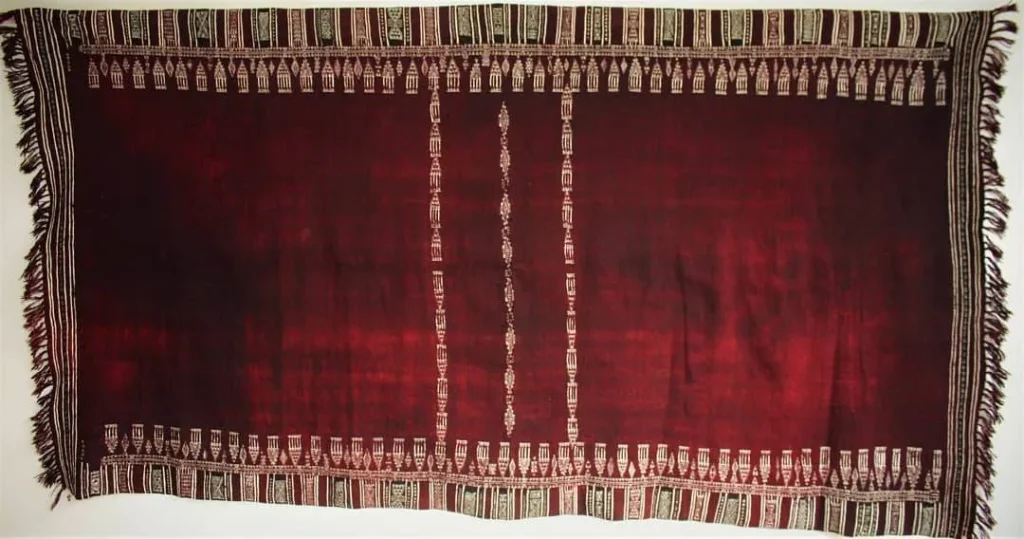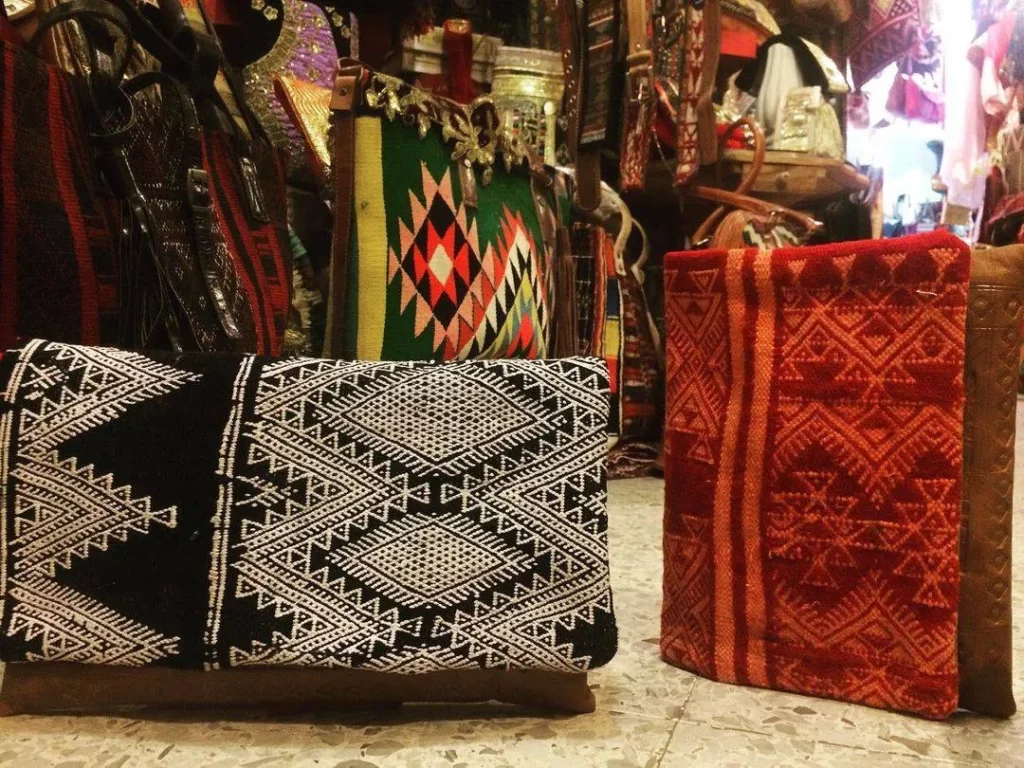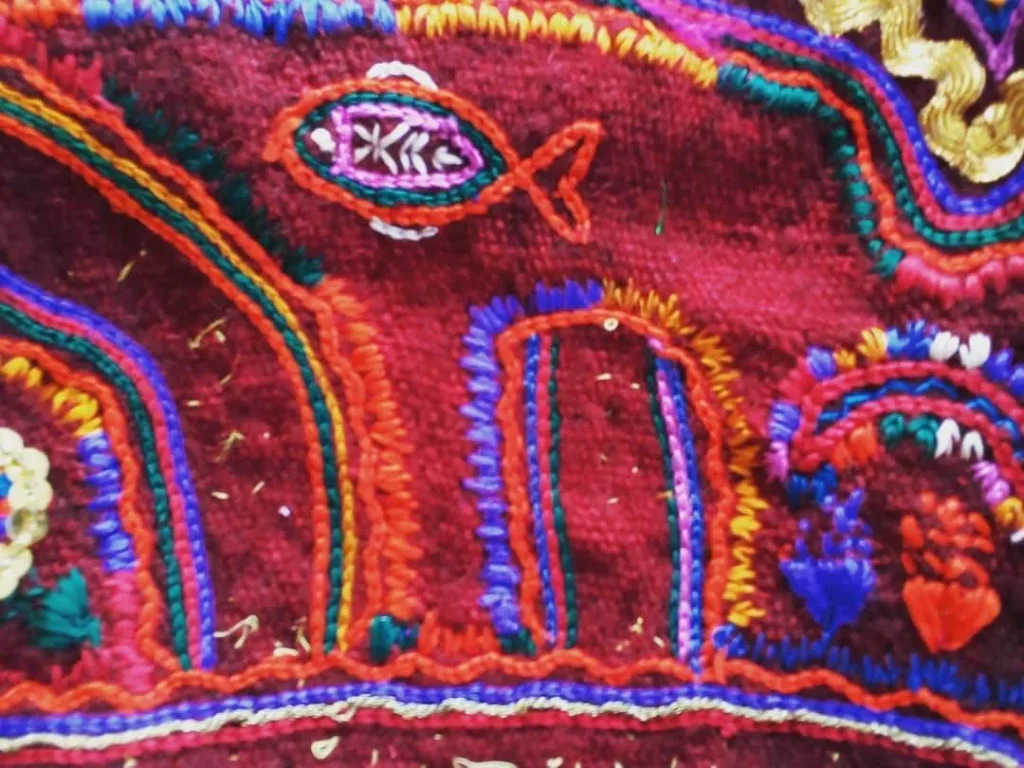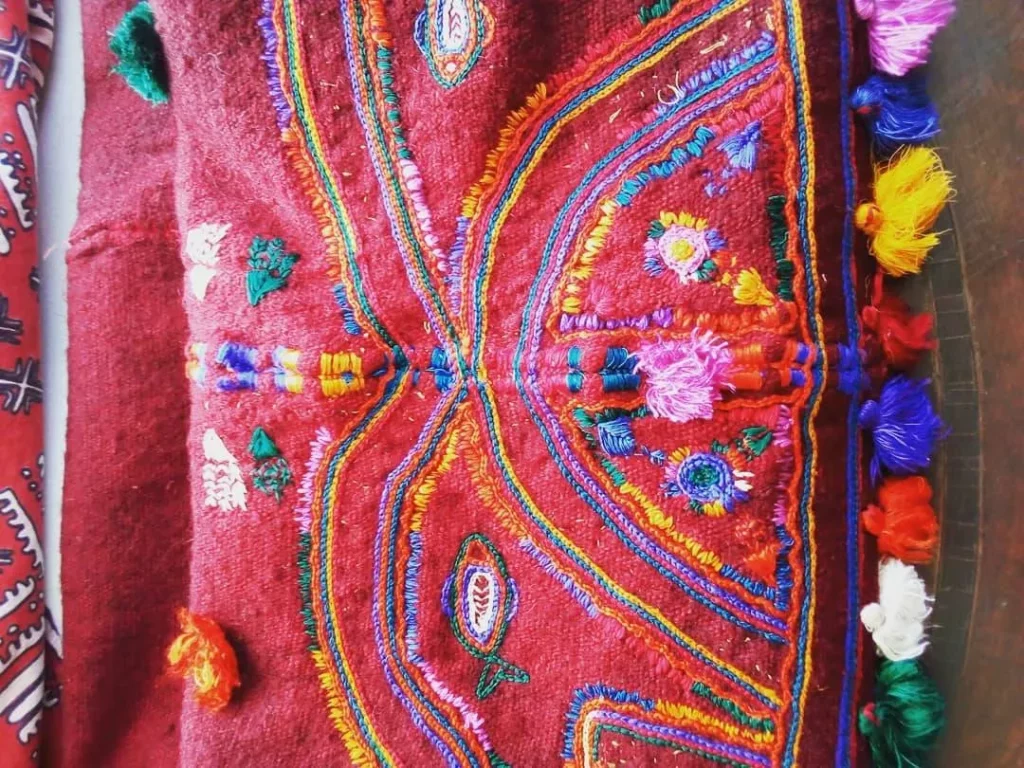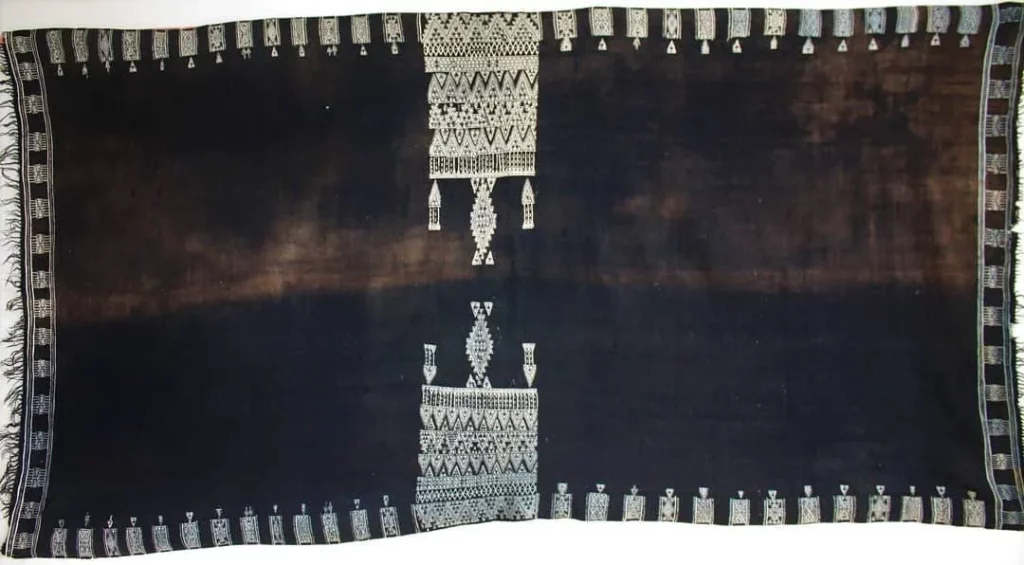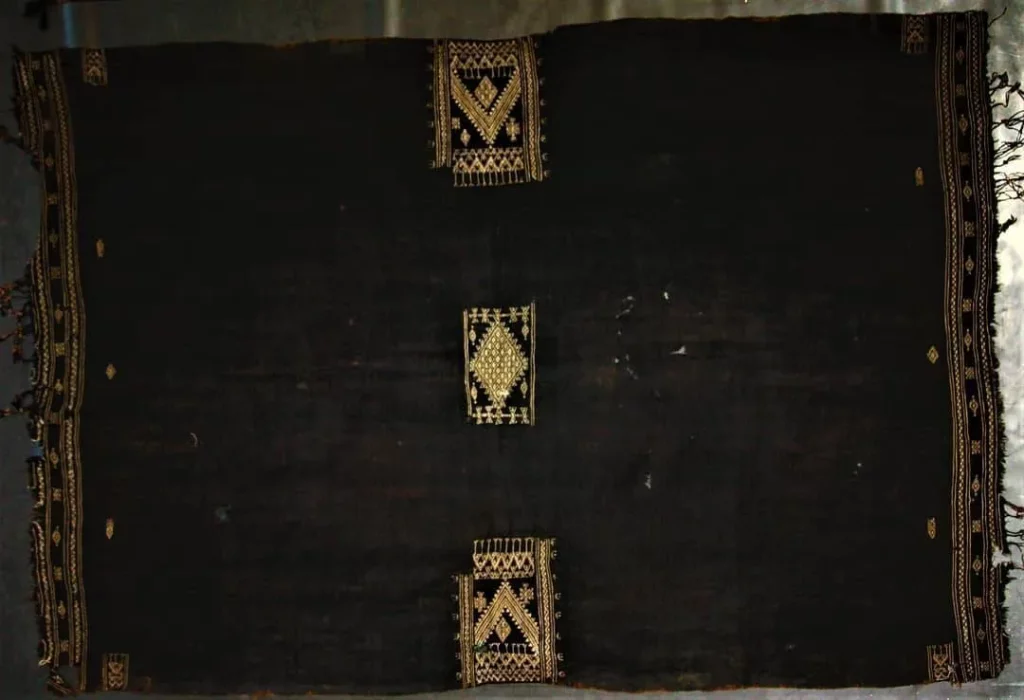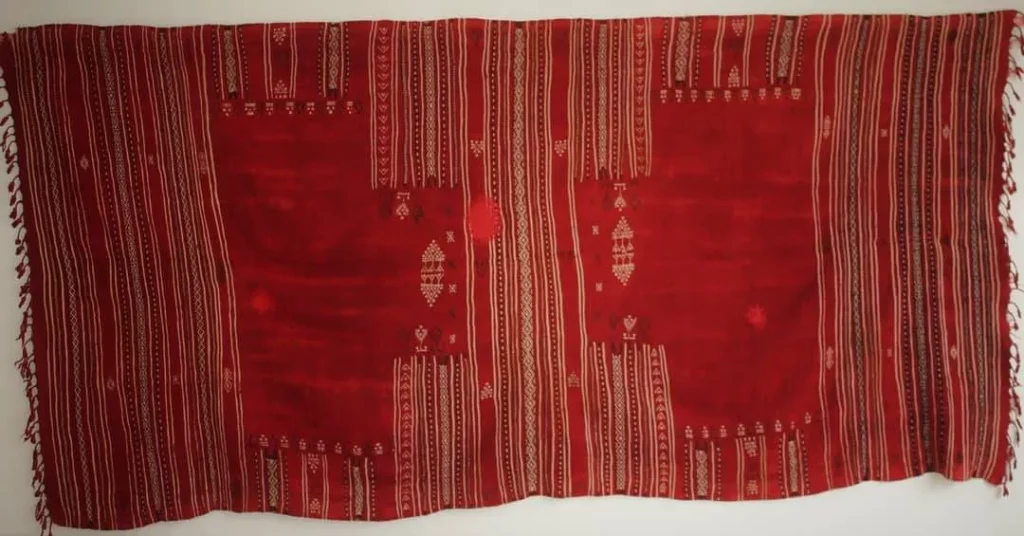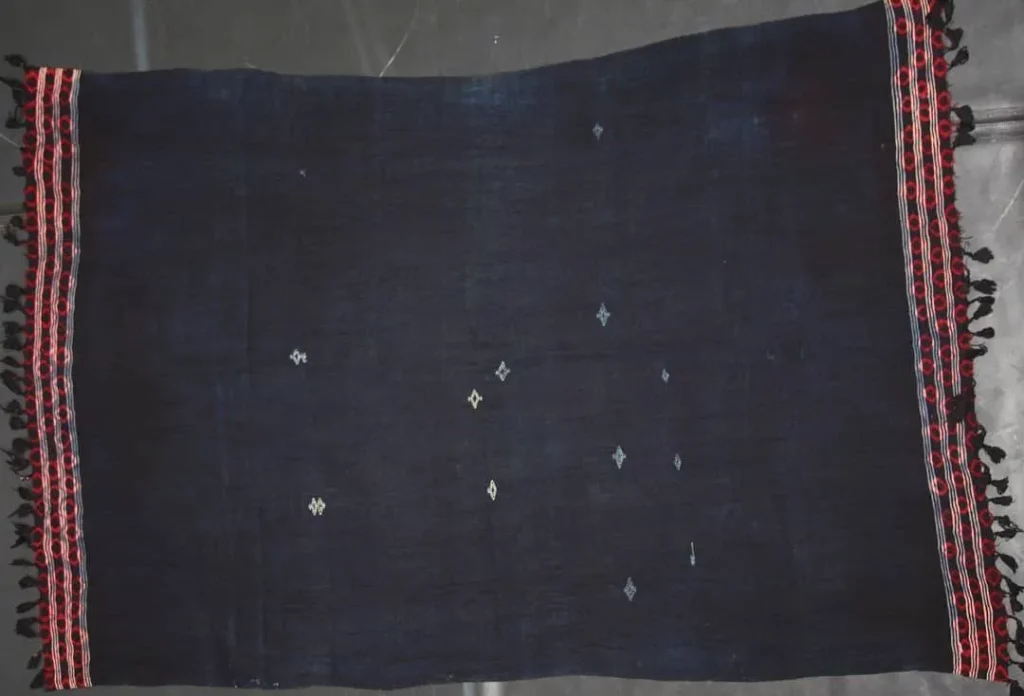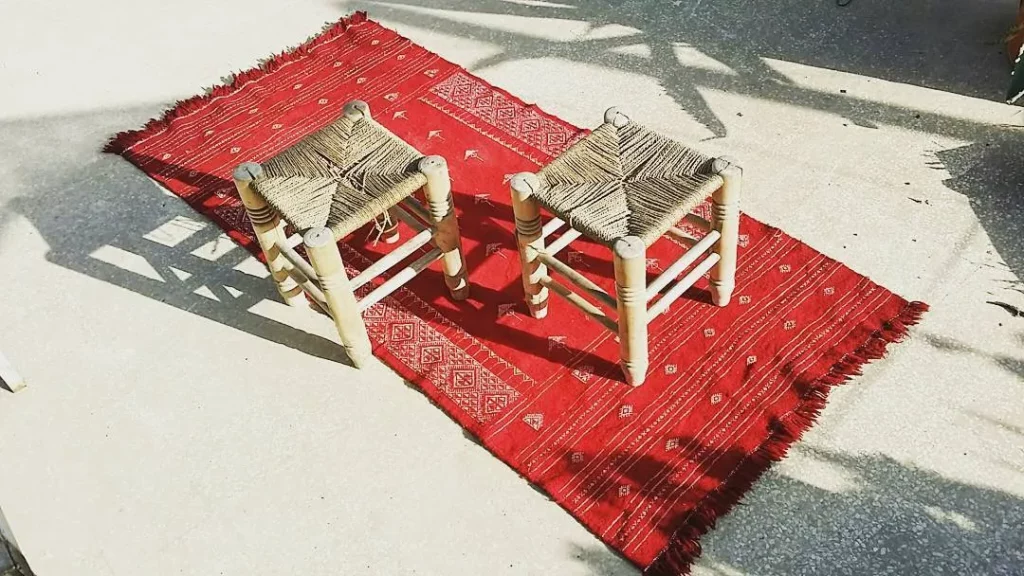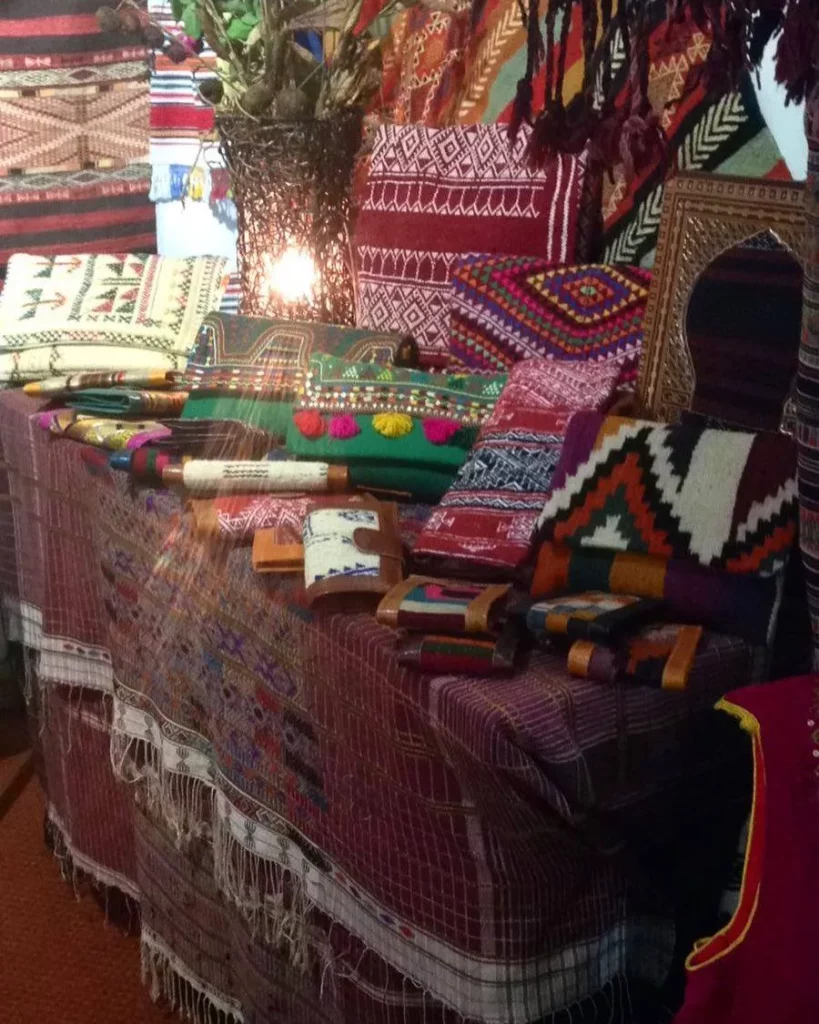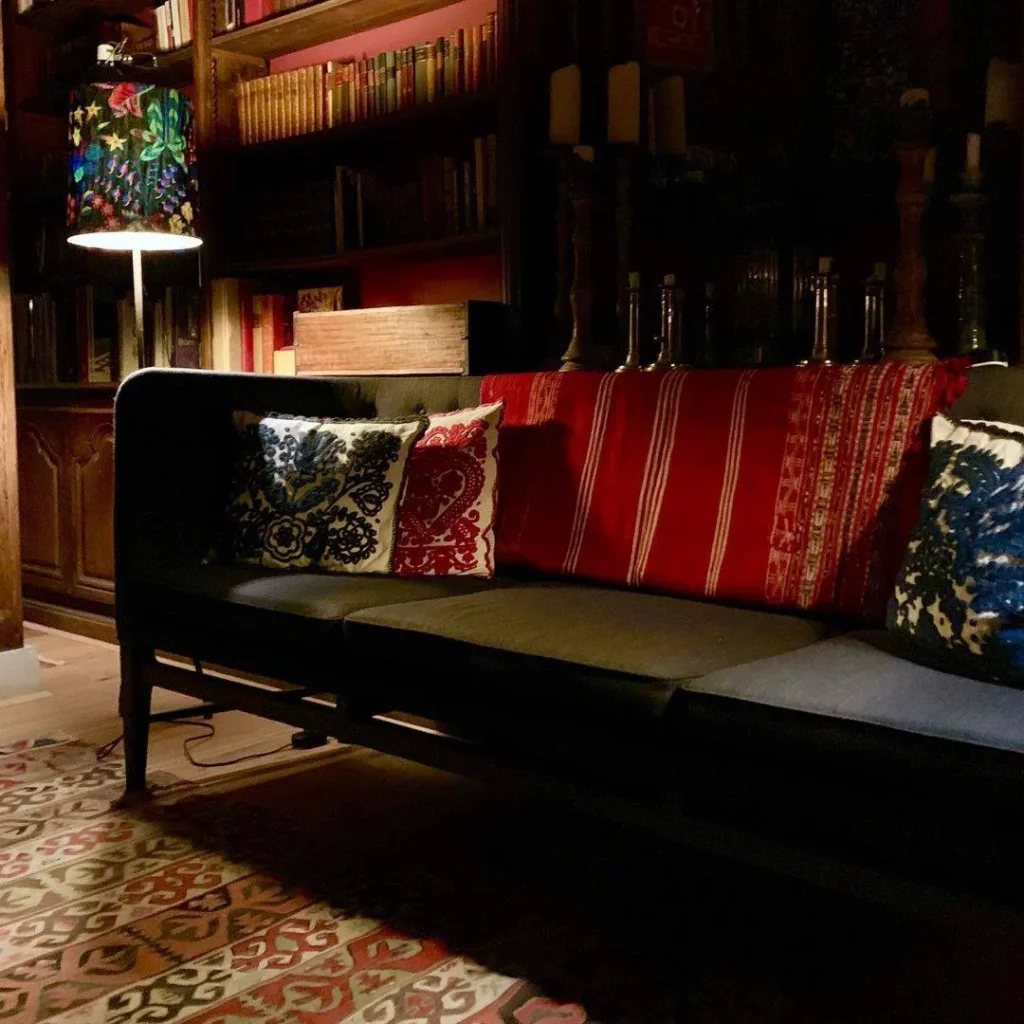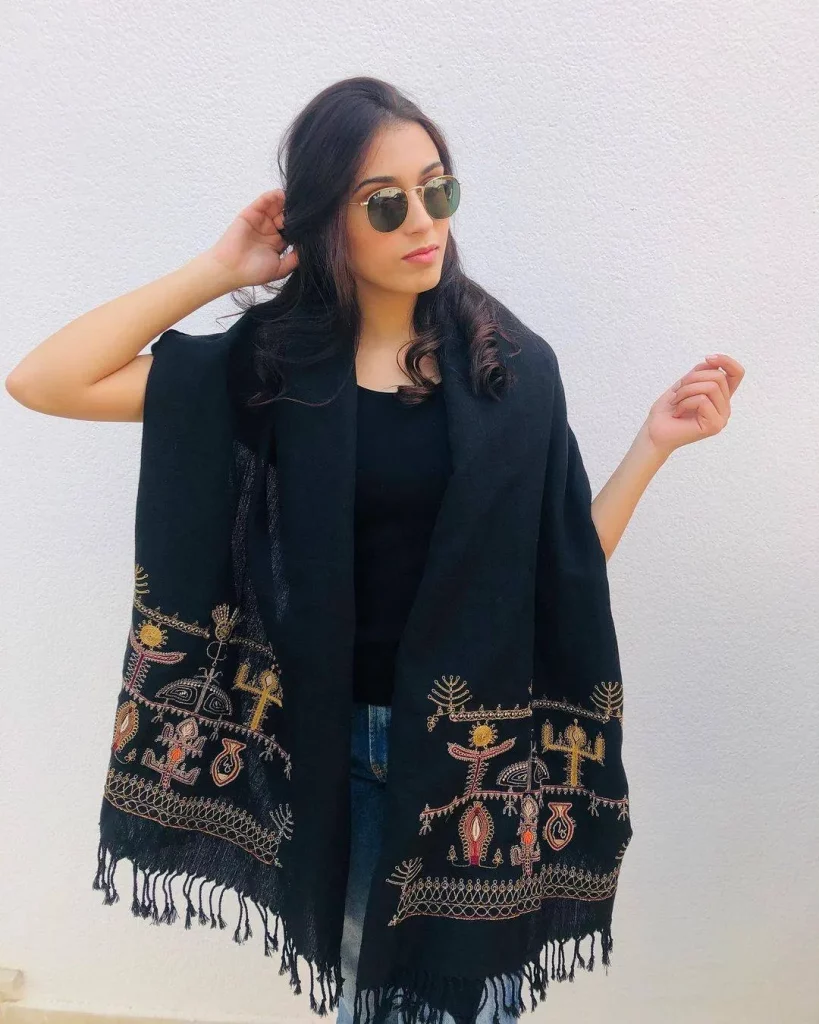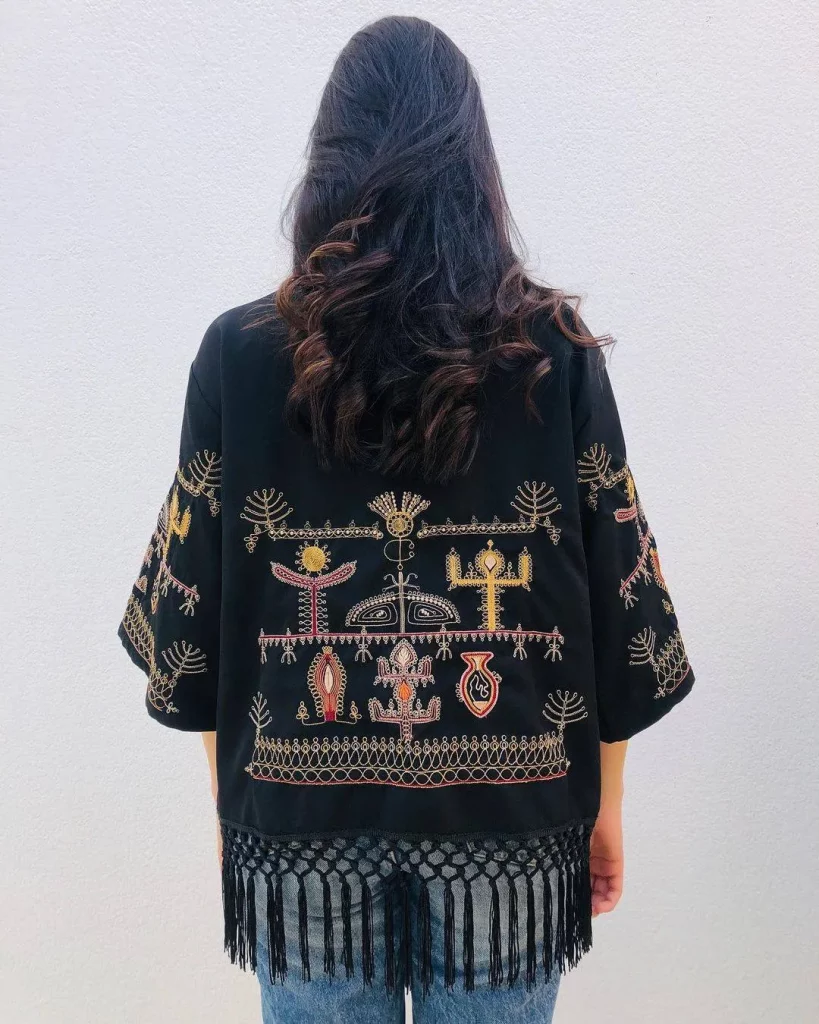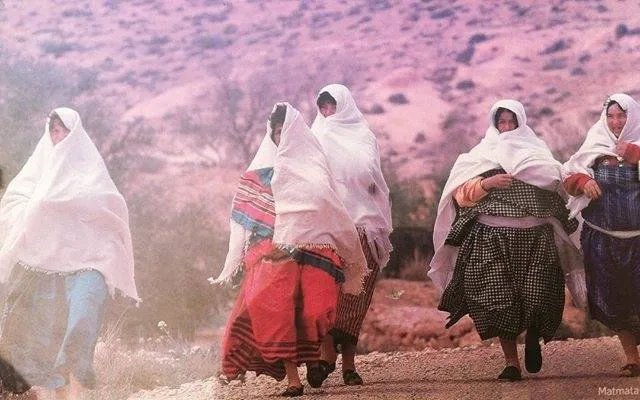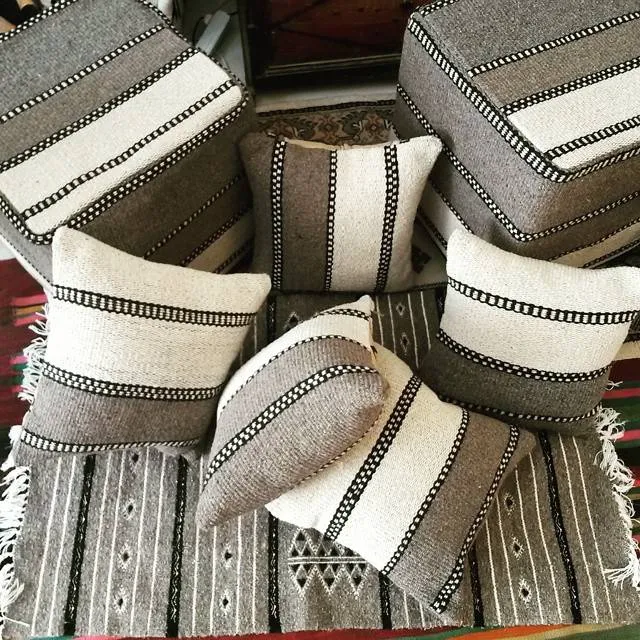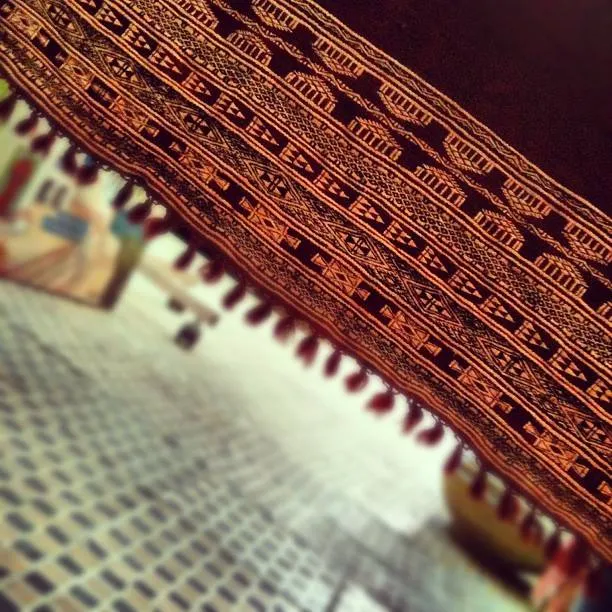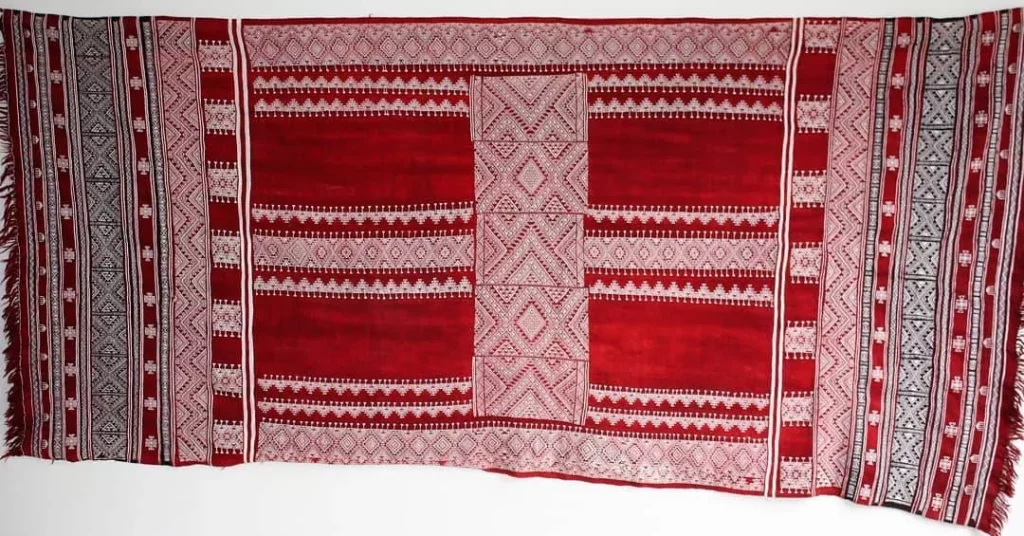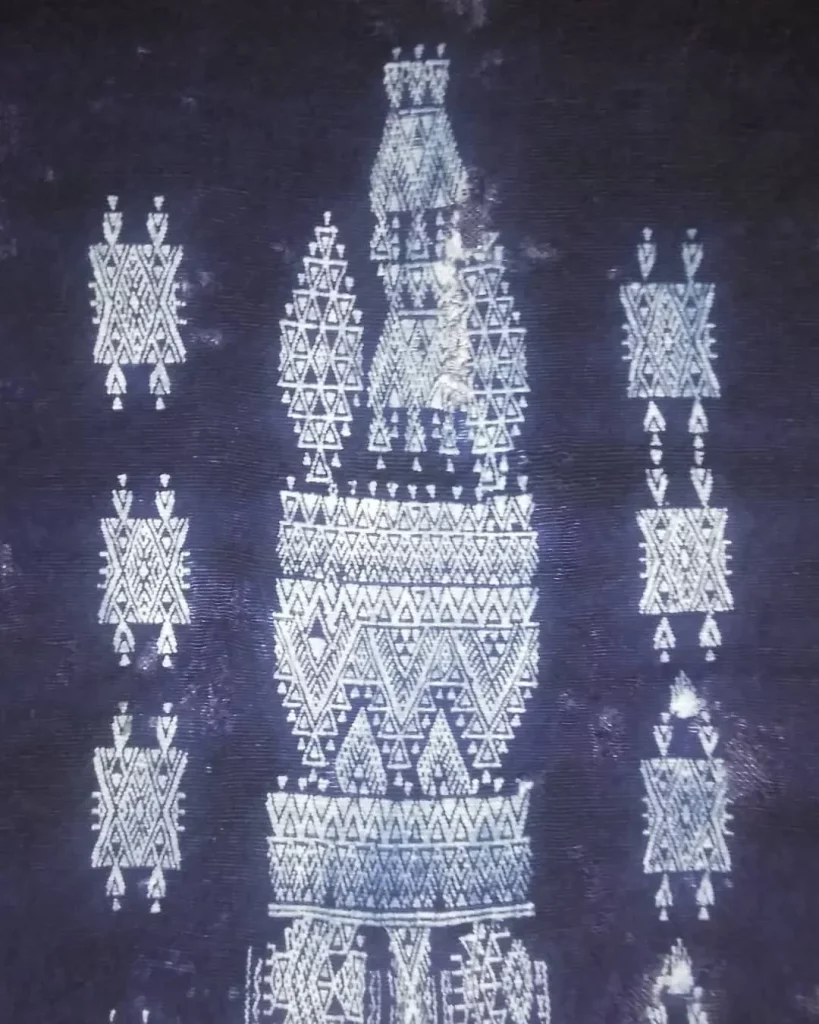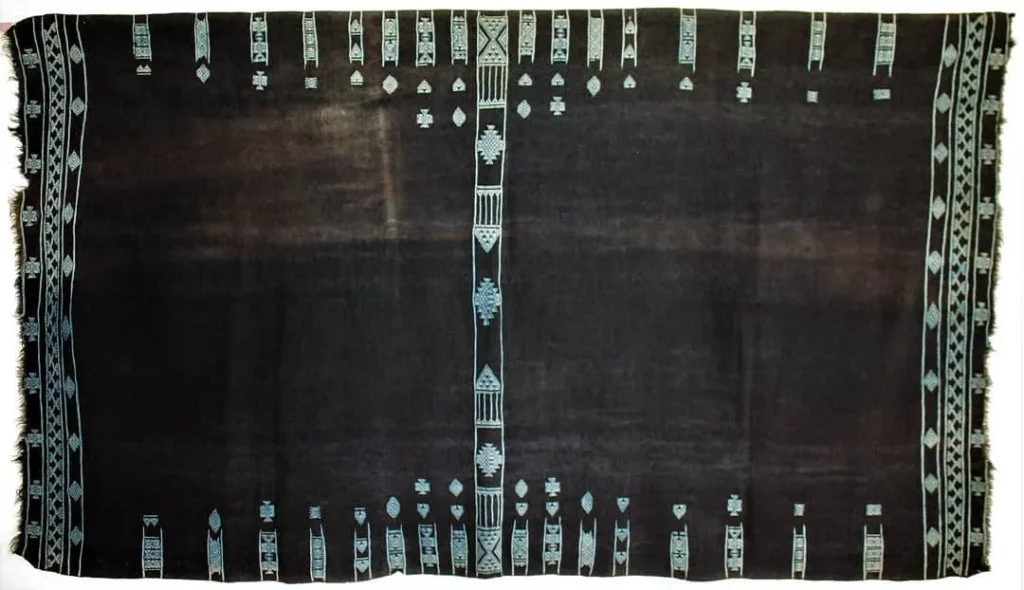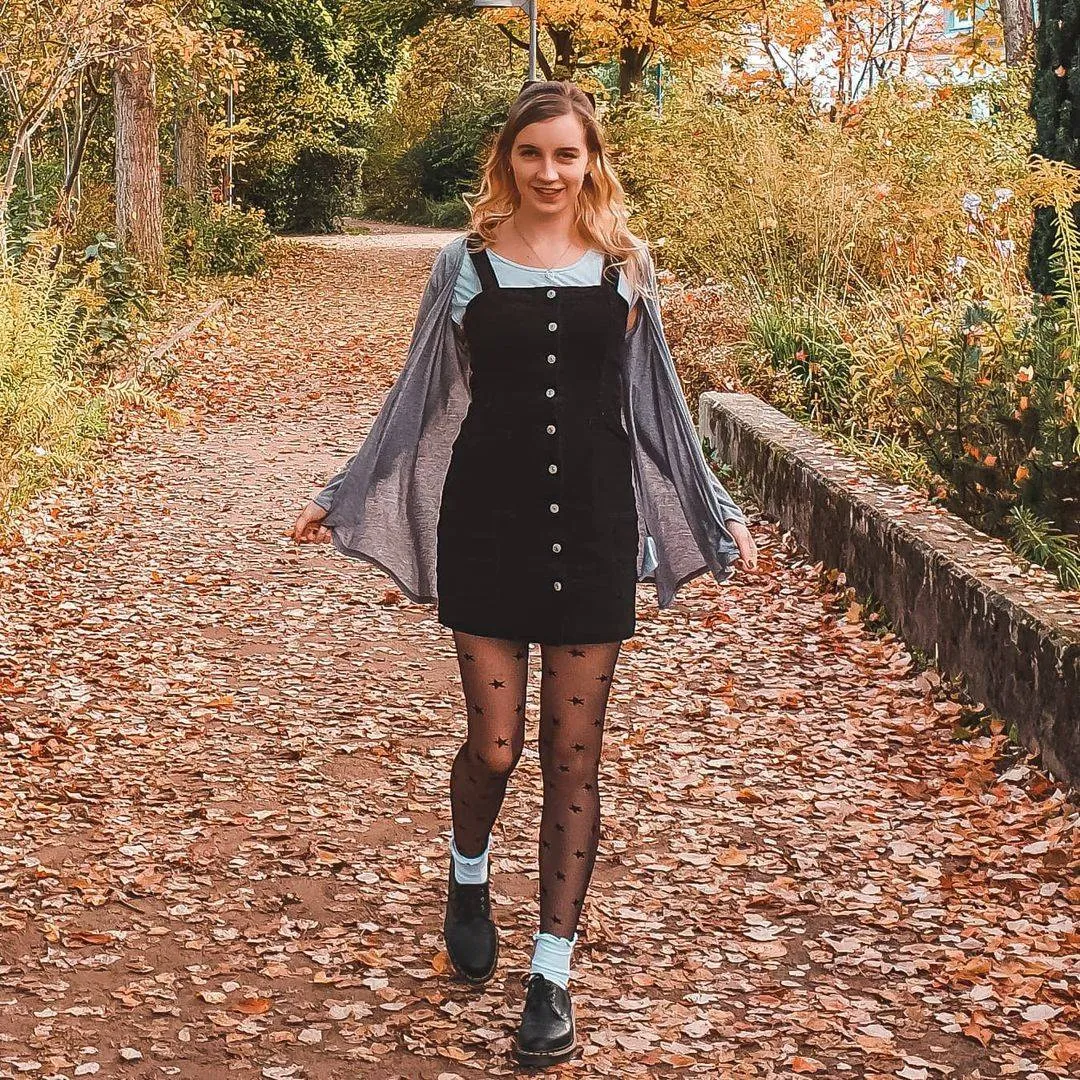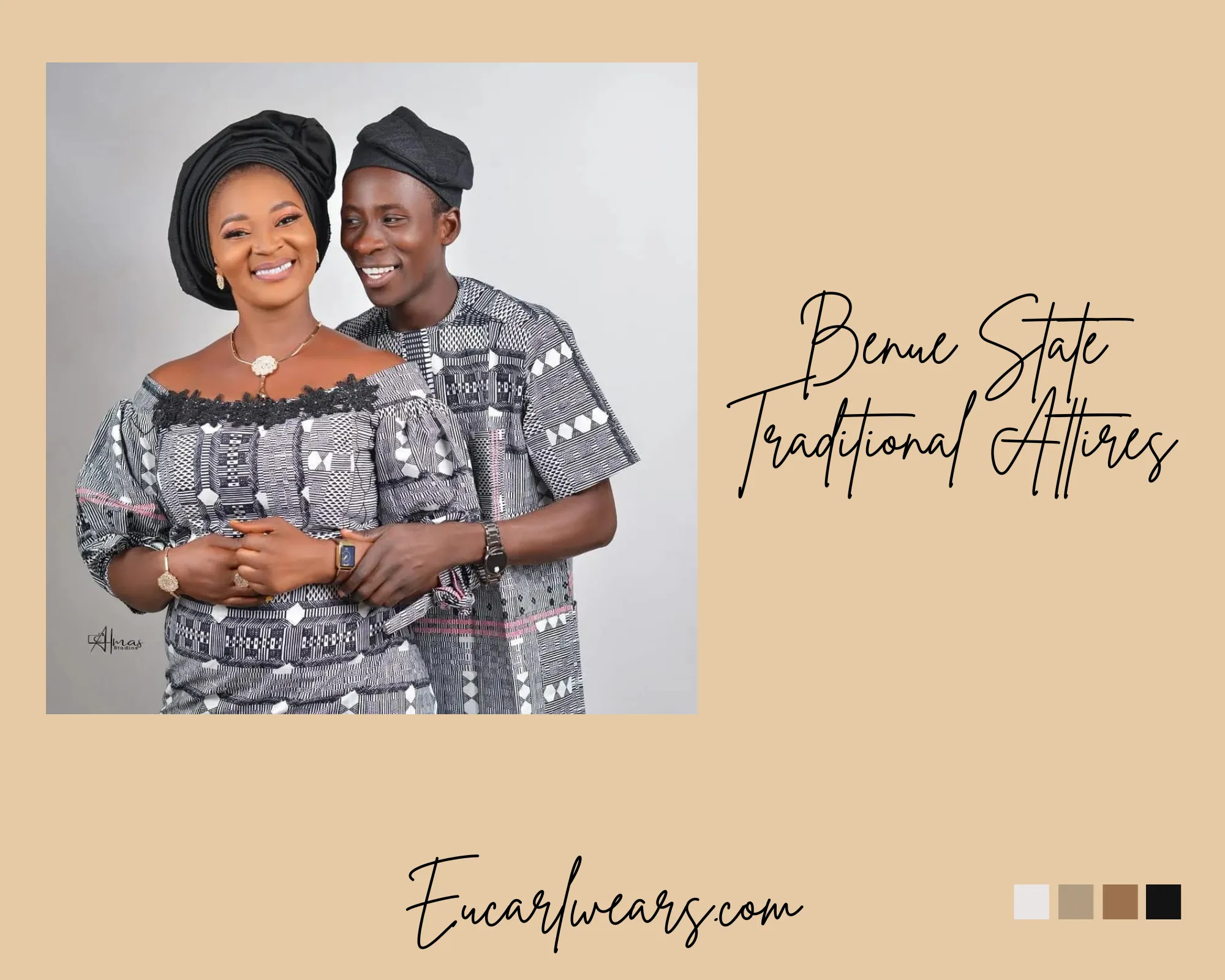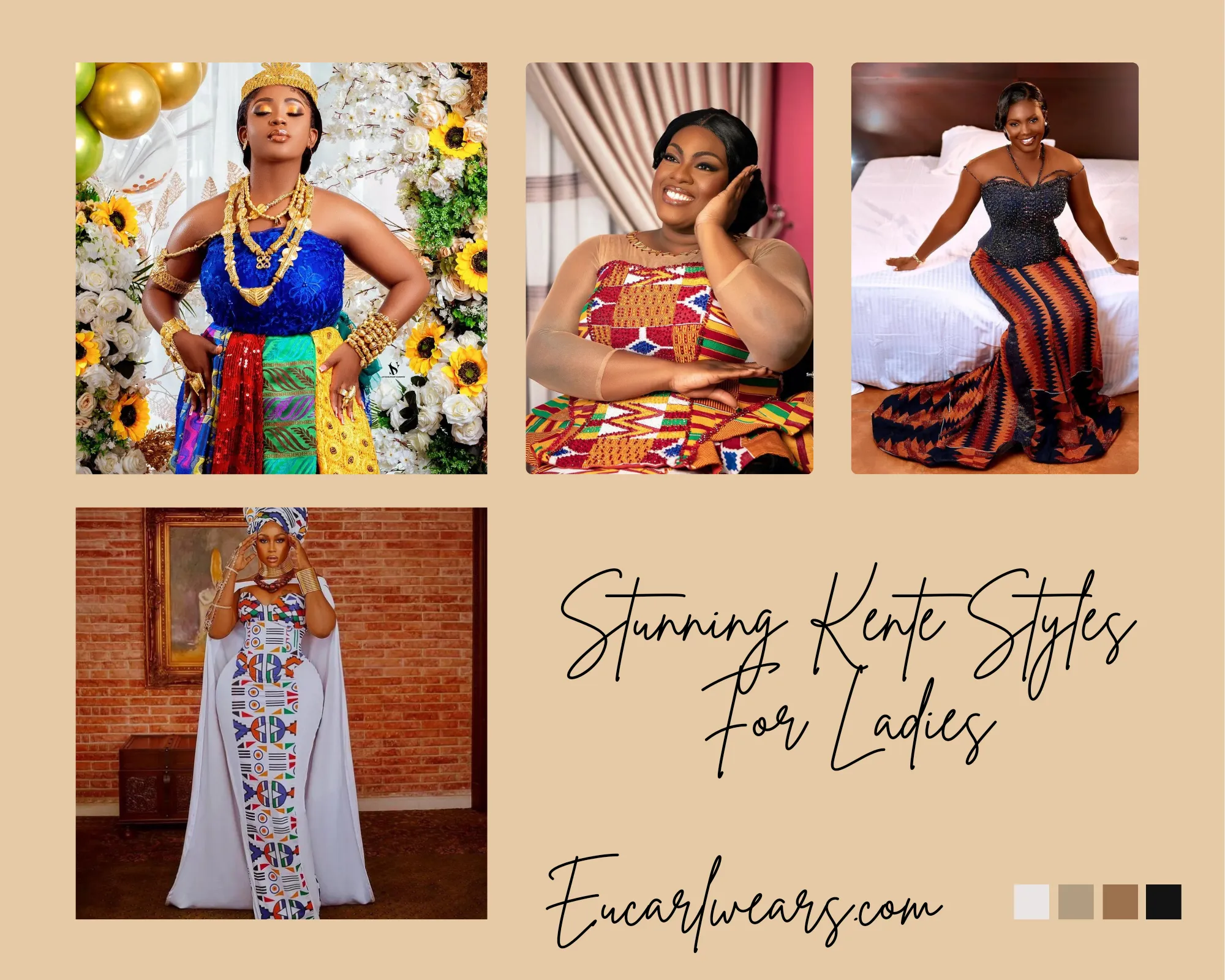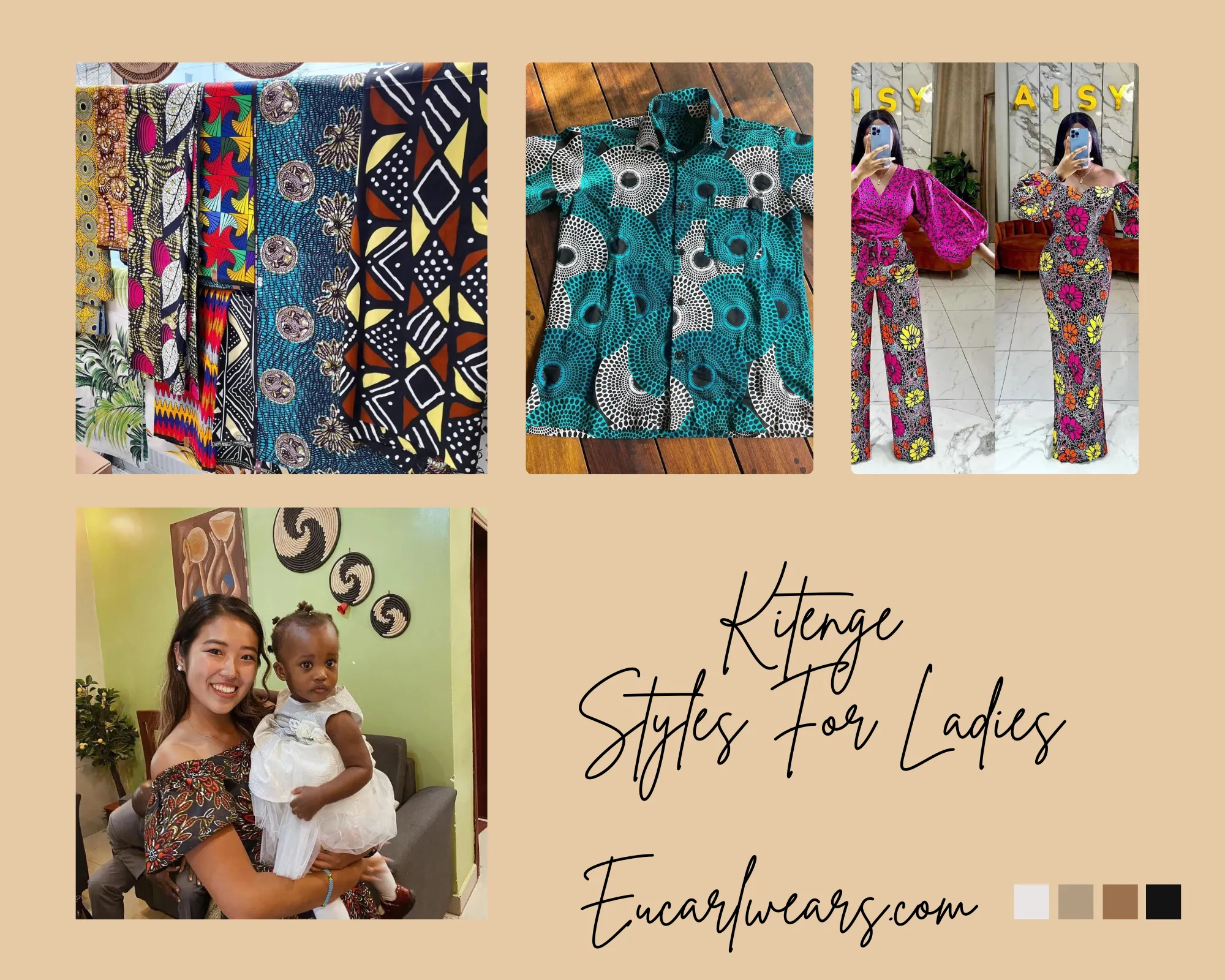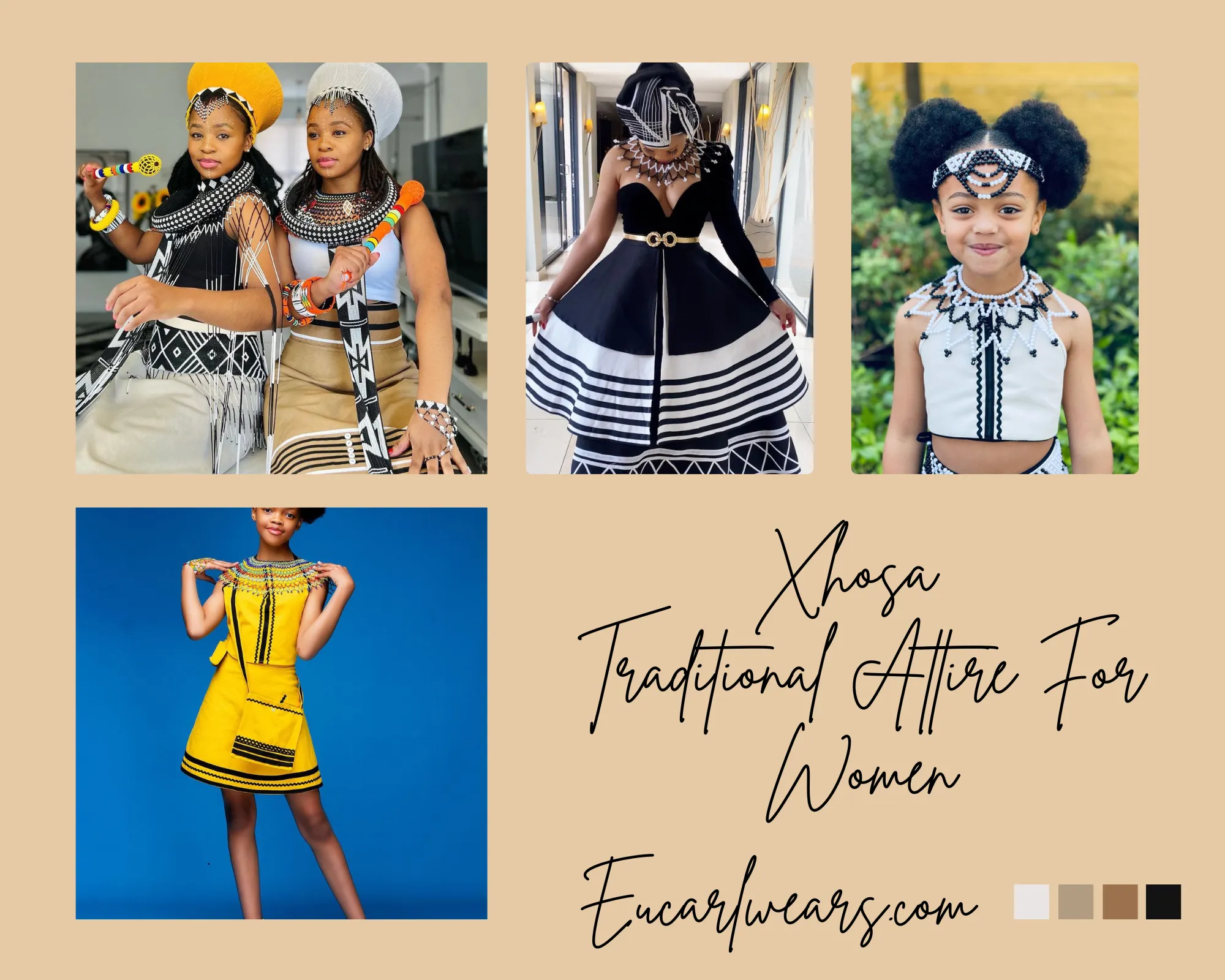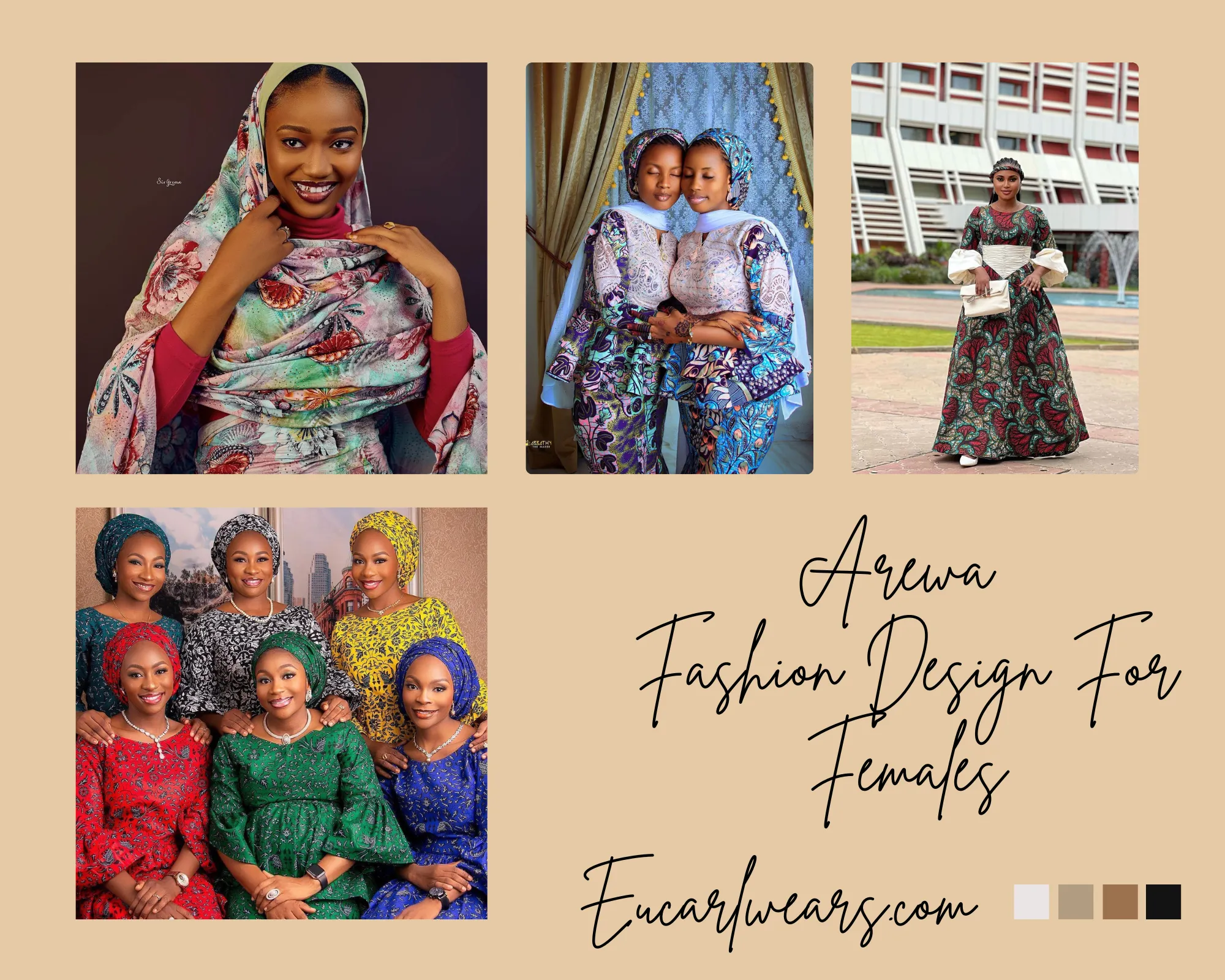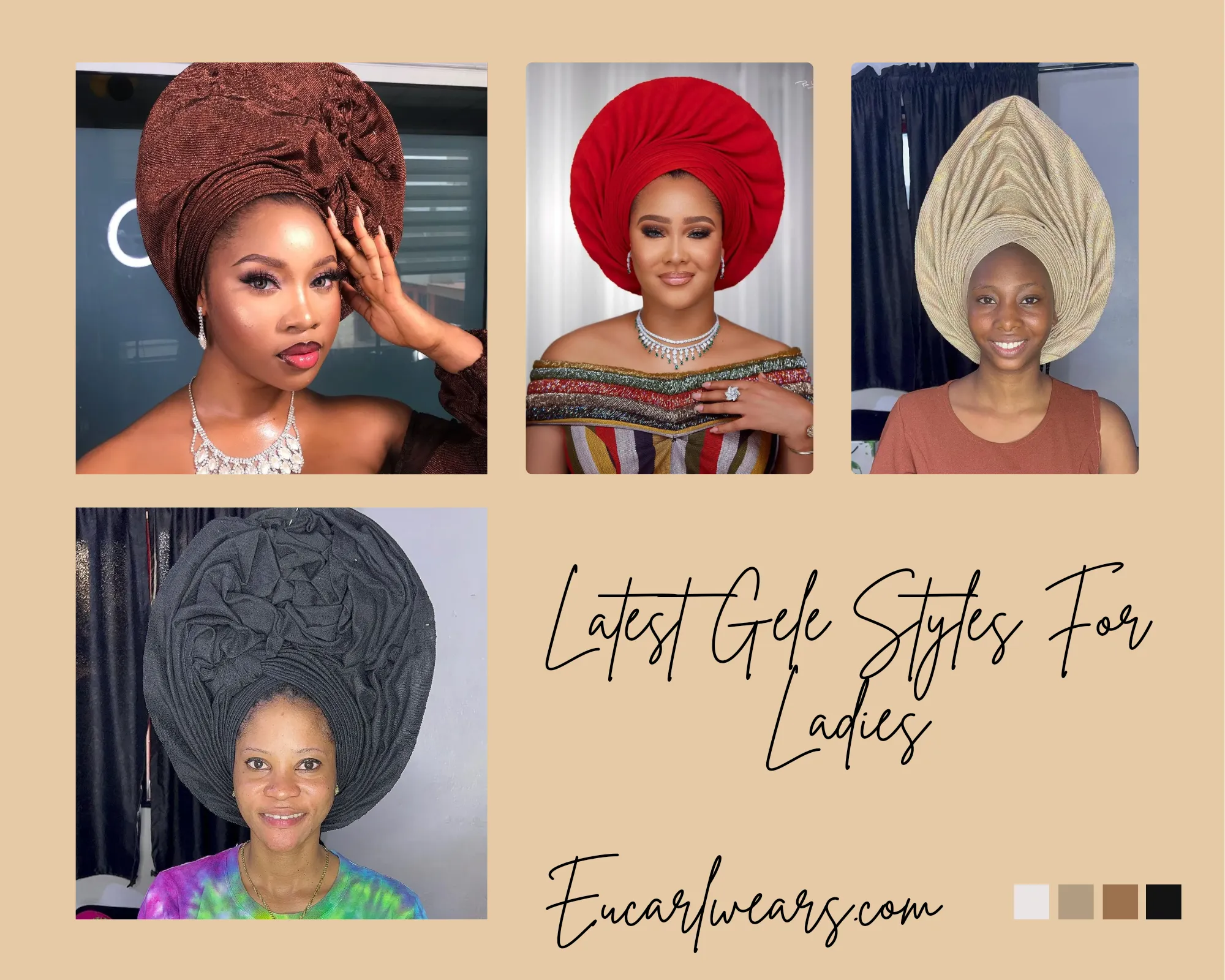African Wear
Awe-inspiring Vintage Tunisian Bakhnoug Textile
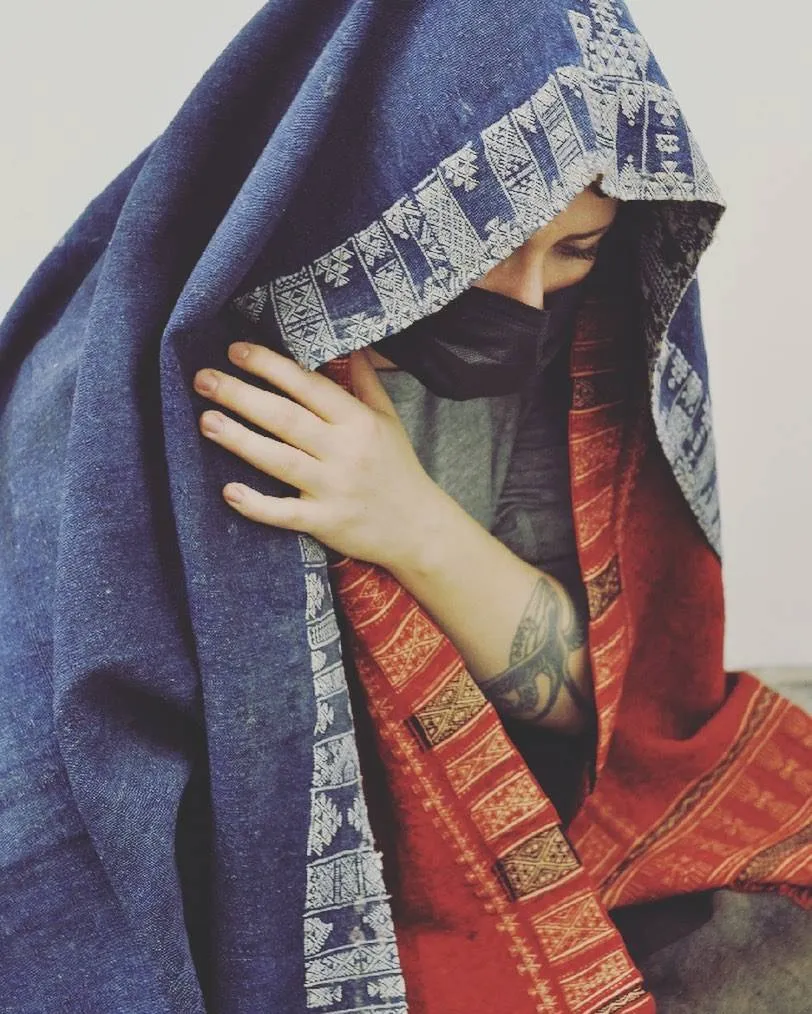
Vintage Tunisian Bakhnoug Textiles are long scarves and shawls used to cover women’s heads. The rectangular shawl is made from woven wool and used to cover the shoulders and heads of Berber women in Southern Tunisia. The textile is believed to have originated in the late 19th and early 20th century
The wool of the Woman’s Mantle (Bakhnoug) is processed by thick manual weaving methods and subsequently dyed, to form a perfect state of color and conservation in different geometric patterns (mostly Islamic) and abstract motifs.
Some of the Berber textiles are left undyed, while others were dyed red, black, or blue according to the wearer’s age, using dyes such as cochineal red, the patina of vegetable dyes, and deep carmine red. The white textiles were for very young girls, red for young women, and black or blue for older women.
At the hem of the shawl, there are wool-knotted fringes to add finesse to the design. These ends are first dipped in red dye during processing, then tied with stones or grains, and finally immersed in an indigo bath, which resulted in a fine circle motif.
Because the weavers were rural women without any form of schooling, there was no way for western scholars and art historians to decode their motifs and language, hence, they were always ignored and sometimes discarded and tagged as abstracts.
Spectacular geometric alphabets are sometimes formed on the Bakhnoug Wool Wedding Shawl. These markings are declarations of hope, faith, and a message of goodwill.
Bakhnougs textiles house a large mass of moral maxims, feelings such as fears, ideas, passions, and personal philosophy.
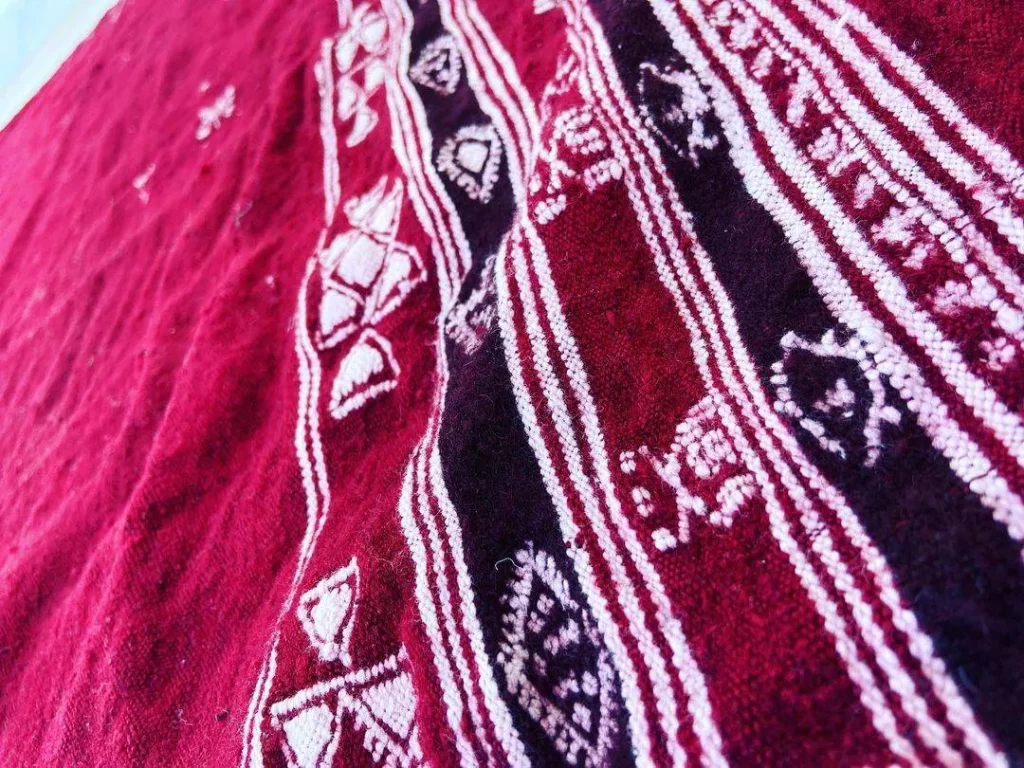
The motifs on the shawls are not figures, unlike the Kudhinda. They are not symbolic and neither do they aim to represent the world. Rather, they mark how people should behave among others in a world viewed from a female perspective.
These unique weavings extend from Morocco to Libya. The abstraction of the microscopic motifs on Tunisian/Libyan bakhnougs bears a sense of emptiness laced with multiple meanings.
In the Mid 1900s, Chenini Village, Tunisia was the ancient settlement on a hilltop ridge that the local Berber Nomads used as a fortified granary and for weaving Bakhnougs. And today, these textiles are rarely available commercially.
Most Bakhnougs are from contemporary productions – mainly from before 1950 when fine and tight weaves used to be made on hand looms.
Common dimensions that you may find Bakhnougs are 155cm X 105cm, 203.2cm × 129.54 cm, and 3′ 9″ x 6’8″
Care Directives for Bakhnoug
- Do not bleach
- Hand wash cold
- Wash/dry light and dark colors separately
- Do not wring dry
- Line dry in the shade
- Iron on medium heat
Pictures of the Vintage Tunisian Bakhnoug Textile
